#but the talk of communism is so like white philosophy based that
Text
"Does it make sense?"
I think, ultimately, the thing that it comes down to for why I just can't see "the Jedi are intentionally written as dogmatic/dispassionate" or "Obi-Wan failed Anakin" or "the Jedi brought their own downfall" reads as valid anymore is because... it makes no sense that George Lucas - of all people - would write that.
Like, this is the guy who preaches the same lessons and philosophies that the Jedi do in the Prequels, every chance he gets (sometimes going all the way back to American Graffiti).
So ask yourself:
Does it make sense that he would intentionally make the characters to whom he gave his own values "dogmatic"?
He's a self-proclaimed "methodist-Buddhist". The Jedi are based on Buddhist monks.
youtube
Does it make sense that the buddhist would write a story about space-buddhists being "emotionless", "devoid of compassion" and "at fault for their own genocide"?
Lucas had an apprenticeship, that turned into a friendly/brotherly bond with his mentor Francis Ford Coppola. Their personalities were completely opposite (Coppola was more outgoing, George was more prudent) but they worked in sync, they completed each other.
youtube
Do you really think that this guy's intended narrative would be that "Qui-Gon would've been better-suited for Anakin as a teacher than Obi-Wan because the latter was prudent/strict and too different from the more passionate Anakin"?
George lays Anakin's downfall on Anakin's shoulders almost every time he talks about it. It's a corruption that was caused from within, he would be able to love without getting attached if he had joined the Jedi at an earlier age, but he didn't so his attachment and greed results in his turn to the Dark Side.
youtube
So does it make sense that Lucas' narrative would be that "the Jedi (aka EXTERNAL forces) pushed, denied and failed Anakin that they caused him to turn" instead of "it was Anakin's own fault because he wasn't able to let go"?
He has said multiple times that, aside from Anakin's downfall, the Prequels center on the Republic's downfall, never mentioned the Jedi once when describing what the Prequels are about.
youtube
If the Prequels were actually about "the fall of the Jedi and how they lost their way", wouldn't he have brought it up once?
And would he really have focused so much on the Senate and politics rather than adding more development to characters like Mace and Yoda?
I think the answer to all of these is "no".
Here's one more: Lucas stated so many times that this was a fairy tale, that all six Star Wars movies are meant for kids. The situation of the Prequels is more complex than the one in the Original Trilogy, but before, during and after the Prequels Lucas confirmed that the Star Wars morality is binary, it is black and white, good vs bad.
Would he really intentionally make the Prequels this subversive story wherein "actually, if you stop and think about it, the good guys are really the bad guys"?
Or is it just that:
We live in a time where movie audiences expect the "good guy" to be individualistic, flawed and non-conformist, and the Jedi are a community of nigh-incorruptible champions of good who've already completed their character arcs.
So the adults (aka not the target audience) who watched the Prequels at the time were turned off by these characters who they perceived as "holier than thou", having been conditioned by the times they lived in to think that there are skeletons in "Mr. Perfect's" closet.
Thus, they retconned the films (via comics, books, games and episodes) so that they could enjoy the Prequels more, and did so by:
injecting more realistic "gray morality" themes into the films and
projecting an oppressive "boys don't cry" philosophy onto the Jedi.
For lack of a better metaphor, "they put a skeleton in Mr. Perfect's closet so that they could finally find his existence bearable, and keep bringing up that skeleton to this day."
#jedi order#george lucas#star wars#long post#meta#in defense of the jedi#pro jedi#Youtube#trying something different#instead of posting quote collections I'm posting video compilations#hopefully it'll work#lucas quotes
278 notes
·
View notes
Text
my kids are watching pocoyo, and yours should too.
note: i don't have kids; the headline is merely an expression.
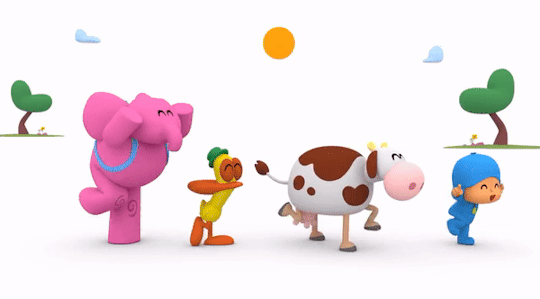
so, as someone who is very passionate about art, i try to hold back from critiquing artworks solely based on personal preference...
that being said, i really like minimalism; the concept of achieving something grand with minimal resources captivates me, and pocoyo, in its ambitious yet lighthearted approach, successfully embraces this artistic philosophy in a way that is both interesting and groundbreaking.
in contrast to the prevalent corporate memphis seen in various enterprises' branding, pocoyo distinguishes itself by avoiding the trappings of a simplifying obsession meant to dumb down iconography.
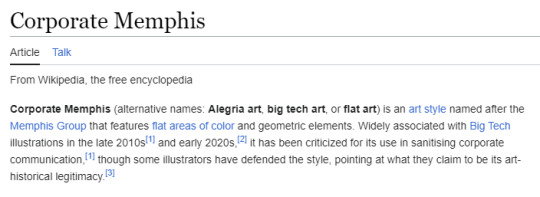
this contemporary minimalist art style is not inherently bad—i personally find it relatively pleasant when used right— but its proliferation often acts as a visually unobtrusive background for corporate spaces. this is like the muzak of visual arts.
for those who don't know, is what we often call elevator music—fabricated to create a facade of a calm work environment for low-income workers, masking the exploitation they endure.
pocoyo utilizes minimalism with another purpose. it invites viewers to immerse themselves in the simplicity of its visuals, employing limited objects that encourage the mind to actively participate by "filling in the blanks."

the cartoon unfolds on an all-white canvas with only certain characters and key items strategically placed, creating ample negative space.
the intentional use of negative space allows the viewer to focus on the characters and the story without unnecessary distractions. the storytelling approach in pocoyo resonates with performative theatre, where negative space is abundant, engaging the audience by encouraging them to fill it with their interpretations; it keeps the viewer at the edge of their seat trying to fill that negative space, if not with items, with an ambientation and abstract elements.
in an era saturated with mindless maximalism and visual oversaturation in media targeted to children, pocoyo stands out by embracing responsible minimalism.
this approach contrasts sharply with the likes of youtube content-farms and cocomelon, a cartoon exemplifying this aggressive maximalism i'm talking about.
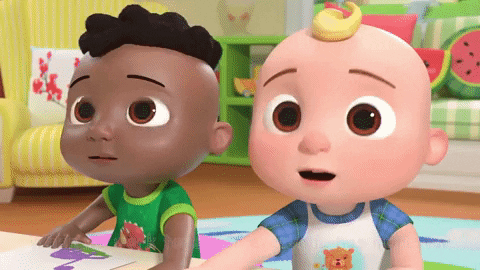
cocomelon's rapid scene cuts every 2 to 4 seconds contribute to overstimulation and potential addiction in young viewers.
they're putting our children on crack.
in contrast, pocoyo's deliberate pacing, occasionally featuring tracking shots and long takes, challenges and improves attention spans.
furthermore, pocoyo employs a narrating language akin to normal adult conversation, fostering a healthy communication style. this stands in stark contrast to cocomelon's patronizing approach and zombie ass nursery rhymes, which oversimplifies language and undermines the development of critical thinking and abstract appreciation in young minds.
so, in conclusion, pocoyo's nuanced approach to minimalism and storytelling not only sets it apart in the world of animated content nowadays, but also challenges the prevailing trends that prioritize overstimulation over depth. it stands as a testament to the potential of thoughtful, intentional design in captivating and educating audiences of all ages.
i love it so much.
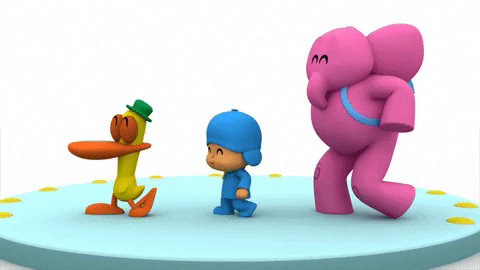
#ramble tag#ramblings#rant#mini essay#hear me out#i swear#you dont get it#i am right#pocoyo#children mental health#childrens media#ipad kids#parenting#it is that deep#minimalism#cocomelon#cocomelon shit#does this make sense#i wrote this in one go#cartoons#youtube#content farm#i am cringe but i am free#they hated jesus because he spoke the truth#corporate memphis#muzak#im going insane
34 notes
·
View notes
Text
James Somerton and the Vampire Chronicles
Ok last thing about this whole James Somerton situation before watching the hbommerguy video.
James Somerton made several videos in which he mentions interview with the vampire and they always rubbed me the wrong way. In the last one, a video of which im still trying to figure out the point, he spends about 20 min trying to tell us that Anne Rice was the first person the portray the vampire as sexy. Which is not true, for example 'The vampire lovers' was made in 1970 and 'The kiss of the vampire' in 1963 (and then i havent even talked about literature). It is not Anne Rice's original idea that vampires can be sexy. But the portrayals of sexy vampires before 1975 were mostly women being sexy, and i guess that doesn't count for him.
The only other things he could talk about was how sexy the main characters are (in a way that made me honestly uncomfortable because he seemed to be undermining the point of the scenes and the show in general) and to give us a general summary of the show he spends ten minutes on.
He goes into the attractiveness of lestat in the book and briefly the show but he goes into no further depth beyond that. And there is a lot to say about attraction in the vampire chronicles beyond that!! Why do we get a ten minute summary of the show instead, where nothing is mentioned to further your point?
Don't get me wrong, Interview with the Vampire is my current hyperfixation and i love hearing about it. But i already knew the plot of the show and you had a point to make, right?? (the point never gets made)
When watching the video back when he posted it i was pretty disappointed that he went into so little depth regarding the show, certainly after the analyses i had already read about it, but now i'm honestly relieved. No doubt he would have directly stolen from our amazing meta creators and analysts in this fandom.
There are more things i can talk about.
His endless praise of Anne Rice as the saviour of all gay people while every other woman (including queer women) is bad for liking and creating content about gay men. (heartstopper, fanfiction, etc.)
How he doesn't mention the racism present in the books while only sparing a sentence or two talking about the handeling of racism in the show. And with that taking a firmly white lens stating that Lestat releases Louis from the shackles of humanity and therefore racism and homophobia. Which, when you watch the show, is obviously not what actually happens. Louis is still factually a black man in the Jim Crow south, he just also has to kill people now and can't talk to his family. Not crazy he doesn't take to vampirism so easily. But James seems to agree with Lestat that he should get over it and have fun.
He does not talk about any of the misogyny present in the books, just not at all. I don't remember him talking about the women in the books or the show at all either...
Now i'm going back to real life where people disappoint me far less
here 5 youtubers that source their content
#james somerton#iwtv#a rant#There is also weird stuff he said about yuri on ice#some weird stuff about japan and the language#Also the whole queer women have it easier around rep thing???#I should have seen it as a sign and unsubscribed#Feel free to add things or correct me on things i have said
30 notes
·
View notes
Note
Hello, please forgive me if this ask is uncalled for, I just figured you would be a good person to ask. What exactly in theory do people in communist circles here mean when they besmirch 'idealists'? I find myself agreeing wholeheartedly with most theroy I've read and generally align with most leftist beliefs. But I would still consider myself an idealist because at my core I believe everything I do because I believe in working towards an ideal world. It makes me a bit sad to see the term used so harshly. I do believe that material conditions matter more than ideals , but I still think my beliefs are based on ideals at their core, am I misattributing the label? Misunderstanding something? Thank you for taking the time to read this if you did, I don't want to use you as my personal tutor or anything, I just want to understand something and wasn't sure who to turn to. Have a nice day.
I'm going to share an extended excerpt from Philosophy and Class Struggle by an anonymous South African theoretician who went by the pen name "Dialego". The whole thing is a very good read and not super long, and while naturally it focuses most on the South African liberation struggle of the 1970s it communicates a lot of guidelines and principles that are useful for any modern revolutionary movement. In any case the below excerpt is taken from the second chapter What Is Dialectical Materialism? and I think it answers your question most thoroughly:
It is sometimes thought that a “materialist” is a person who simply looks after his own selfish interests whereas an “idealist” is one who is prepared to sacrifice for a worthwhile cause. Yet, if this were so, it would be the conservatives of this world who are the “materialists” and the revolutionaries who are moved by “idealism"!
In fact, of course, “materialism” and “idealism” do not refer to vague moral attitudes of this kind. They are terms used in philosophy to describe the only two basic interpretations of the world which can be consistently held.
Everyone who studies the world around him has to find the origin of things. What causes things to move, or to act or to behave in the way they do? Are the forces spiritual in origin or are they produced by the material world?
Some years ago a Calvinist minister ascribed earth tremors in the western Cape to the growing disquiet of the Almighty towards modern forms of music and dress! Whereas a materialist seeks to explain the world of society and nature according to the material conditions and processes at work, the idealist believes that events take place because of the existence of spiritual forces or “ideas”.
An idealist might argue that apartheid in South Africa has been brought about by the “ill-will” or “evil intentions” of white people who don’t wish to face up to reality. For a materialist, on the other hand, this “ill-will” or “evil intention” still needs to be explained, and the real reason for apartheid is not to be found in people’s heads but in their pockets, in that material system of capitalist exploitation which makes apartheid highly profitable for financial investors, factory owners and the giant farms. It is here that the roots of the system lie.
We often talk about the way in which for example “anti-communist ideas” weaken our movement by creating divisions in its ranks and this of course is true. But we must never forget that these anti-communist “ideas” don’t simply fall from the skies: they reflect and arise out of the material interests of monopoly capitalism and unless they are firmly rebuffed, they are likely to make an impact on those whose stake in society, however small, makes them vulnerable to anti-communist scare-mongering
Thus we can say that whereas idealism looks for an explanation of
the world in terms of the “ideas”, “intentions” or “will” of people, materialism considers that the source of all events and actions is to be found in material causes or, as they are sometimes called, “the laws of nature.”
It is true that cruder forms of idealism ascribe things in the world to the “will of God” whereas more subtle forms of idealism put the cause down to the ideas which exist in the heads of individuals on earth, but in neither case do idealists seek an explanation in material reality.
Whereas idealism believes that the ideas in people’s heads exist outside of and independently of the world of matter, materialism contends that people’s ideas, like all other aspects of their behaviour, are the product of material causes and can only be properly understood when these causes are discovered.
Materialists in fact argue that man was neither created by God nor is his origin a sheer mystery. He developed out of the world of nature through a long process of evolution and his ideas are the product of the mental activity of his brain, itself a highly developed and complex form of matter.
This does not mean that materialists are not concerned about people’s ideas. On the contrary, materialists are the only people in the world who are able to explain them properly. What materialism rejects are not ideas, or their immense importance in influencing the course of events. Rather it is the idealist theory of ideas which materialists challenge, because this treats ideas as mystical forces that somehow exist independently of material reality.
9 notes
·
View notes
Note
I believe in a lot of things but because I’m not gung-ho about murder and the destruction of the system, you’ll always say I don’t believe strongly enough. I know there’s nothing I can do to get you to respect me, I just want an answer to the question: where are these new, lefty voters going to come from, and why is “preventing total collapse into fascism” not a good enough reason for them to vote? To do this really minor thing? Why do you all default to guillotines?
And, like, as far as I can tell, your position is that I should die, everyone I love should die, all the fucking poor and queer and black people who live in this red state hellhole should die, so that you can build the beautiful anarchist future in our ashes and maybe call us “martyrs.” It’s cold fucking comfort. We have no chance of winning a fight and you want to force us into a fight because you “believe in something” and are therefore morally right, I guess.
"As far as I can tell, your position is that I should die, everyone I love should die, all the fucking poor and queer and black people who live in this red state hellhole should die, so that you can build the beautiful anarchist future in our ashes and maybe call us “martyrs.”
If that's what you can tell about my political positions then I don't have to respond to anything you're saying because I am *very* vocal about my positions and they are mostly "form parallel structures" and "join unions." (I will respond anyway because I'm a contentious fuck)
@politicalmissdemeanor and @how-to-do-activism are were I store my politics reblogs. You can go check them out. On both of those you will find several reblogs of the essay "against the logic of the guillotine," which I reblog frequently because my OTHER big political stance is prison abolition and prison abolition doesn't exactly sit comfortably alongside the idea of *any* executions; suggesting that I - or most anarchists - default to guillotines suggests that you're not familiar with many anarchists. It is, of course, not your responsibility to be familiar with many anarchists, but if you're going to accuse me of wanting you dead and a utopia built on your ashes then it IS your responsibility to be familiar with *me.*
Also I think that everyone should be clear, when I talk about "fully automated luxury gay space communism" that is a tongue-in-cheek way of discussing a post-scarcity world. I don't think we're actually going to *get* fully automated luxury gay space communism, but I also think that scarcity in the modern era is largely constructed and political, and that is something that should be addressed.
I mention that because utopianism is controversial among anarchists and if you see me talking about "in the future anarchist utopia" you should read that in the same tone that I am using in discussions about "fully automated luxury gay space communism." I don't think we're going to *get* a future anarchist utopia (and I actually think the idea of utopias specifically is harmful) however I do believe a better world is possible and that people should work toward that.
But what it sounds like is you've looked through my blog for the past week only and see me talking about the democratic party attempting to retain white, educated suburban voters instead of reaching out voters on the left or attempting to retain them and have extrapolated my entire political philosophy from a single paragraph and a link to an AP story.
So, point by point:
I believe in a lot of things but because I’m not gung-ho about murder and the destruction of the system, you’ll always say I don’t believe strongly enough.
Then you should probably base your arguments on why you support the system and think it works instead of building an argument out of "well it's better than what republicans want." I clearly exist within this system and I have posts about how it could be improved (postal banking, automatic voter registration, ranked preference voting, universal ID) even though I don't particularly want to perpetuate it.
You don't act like you actually believe what you're saying, you act like you're clinging to it out of desperation. You are not positively arguing for your system, you are holding it up as a shield against something worse. I'd recommend taking some time to sit down and think about what you consider the merits of this system are. "Checks and balances" are one of the things that people seem to like about the American political system; I will agree that it's good that presidents are not kings and can't just will law into existence (it's part of why I'm so critical about the use of executive orders!), and that a legislative system doesn't have to be terrible. However my criticism, as an anarchist, is that these checks and balances don't actually seem to be checking or balancing anything and that presidents *as a concept* are bad and there are probably ways to make this system more democratic while still protecting people from the tyranny of the majority so perhaps if you want to keep the system going you should investigate what ability you have, as a supporter of the system, to change those things. (the thing is, you don't actually have the ability to change those things and it's part of why I don't think the system works).
I know there’s nothing I can do to get you to respect me,
Friend. Buddy. Pal. I think that all humans are inherently worthy of respect. What I am never going to *agree with* is your political system.
I just want an answer to the question: where are these new, lefty voters going to come from, and why is “preventing total collapse into fascism” not a good enough reason for them to vote? To do this really minor thing?
I'm not sure if you're aware of this but, as time passes children stop being children and eventually gain rights as individuals, including the right to vote.

And actually, I am arguing that leftists and young voters already ARE voting for you, but they're doing so because - as you have stated - the other choice is fascism.

But "vote to prevent fascism" is not a party platform and it is a concession to let the fascists control the conversation. It enables the ratchet effect. Republicans get into power and drag politics further right and then Democrats run against them on the bare promise to "hold the line." Progressive candidates within the party rarely get support from the party because of the need to keep the centrist voters, to "heal the soul of America," and when progressive democrats DO get elected they are often blamed for falling approval ratings or low voter turnout or people switching parties.
I have been explicit about the fact that I voted for democrats; that was the harm reductionist stance in 2020, right? "Hold your nose, vote like hell, then hold their feet to the fire." You see why this doesn't actually work, right? Because I can't hold their feet to the fire. Because all I can say is "support policies I believe in or you'll lose my vote" but they don't have to worry about losing my vote because my alternative is to vote for the lesser evil or "not voting is a vote for republicans." So either I was going to vote for them anyway or I wasn't going to vote at all, so they don't have to give a shit about my vote, which is why many anarchists see voting at all as harmful.
You are saying "not-fascism is good enough, I have to accept what I'm given and be grateful that it isn't worse" and honestly take a look at what you're saying. That's slop. That's dreck. They are feeding you garbage and that should be more radicalizing than it has been. You deserve better than that. EVERYONE deserves better than that.
Anyway yeah the new voters are going to be young people. Young people have historically participated in elections at a lower rate than the rest of the population and your job as a supporter of electoralism is to convince them that voting for democrats will do more than not voting. That's kind of a hard sell when the democratic party pitch since at least 2017 has been "stop the fascist creep in America" but fascism has kept right on creeping (which I don't think is the democrats' fault, per se, just that they don't actually have the power to do anything to stop it so it's a bad pledge to campaign on).
Well, and also this:

"stop fascism by voting for dems" is also a hard sell when you can't raise the minimum wage but you can increase funding for police.
Here's the thing: you've got your votes. Leftists hold their noses and young people are voting in historically high numbers, and are generally voting for democrats. There you go. You've got the votes. People ARE doing this tiny thing. And democrats are still yelling at leftists and young people to vote harder while courting center votes.
Who are you mad at? Who do *you* think is not voting? How much do you think it's worthwhile to compromise your political goals to get their votes? Clearly the democratic party thinks that centrist suburban white people aren't voting for them and they're willing to compromise enough that "better than the other guy" is a platform.
Why do you all default to guillotines?
I've been over this but I don't think that support for execution is a coherent anti-state position. Again, here is Against the Logic of the Guillotine.
And, like, as far as I can tell, your position is that I should die, everyone I love should die, all the fucking poor and queer and black people who live in this red state hellhole should die, so that you can build the beautiful anarchist future in our ashes and maybe call us “martyrs.”
Did you *look* at any of my political positions? Or did you make up an anarchist to get mad at?
I've gotten yelled at kind of a lot for "well obviously your politics state that my people don't have value and should die" from people who seem to have never interacted with me or my politics. Do you think that all anarchists are anti-civ? Do you think that doctors and factories won't exist in an anarchist system? Have you ever looked at ANY mutual aid projects? Are you not aware of black anarchism? You know what I'm just going to post a quote from that link on anti-civ views because that seems to be the center of a lot of the belief that anarchists want all queer and disabled and marginalized people dead:
Civilisation comes with many, many problems but it is better than the alternative. The challenge for anarchists is in transforming civilisation to a form that is without hierarchy, or imbalances of power or wealth [...] To do this we need modern technology to clean our water, pump away and process our waste and inoculate or cure people of the diseases of high population density. With only 10 million people on the earth you can shit in the woods providing you keep moving on. With 6 billion those who shit in the woods are shitting in the water they and those around them will have to drink.
Of all your off-the wall statements in these asks this is the one that makes it the most clear that you don't know who I am or what my political positions are and are just yelling at a stranger.
anyway, back to your asks:
it’s cold fucking comfort. We have no chance of winning a fight and you want to force us into a fight because you “believe in something” and are therefore morally right, I guess.
I think there's a broad misapprehension that all anarchists are militant insurrectionist anarchists. I think that this is because most anarchists are operating from the belief that the existing system cannot be reformed, which people often interpret to mean "it must therefore be torn down in a brief and violent revolution and replaced only with the system that I say will work best."
I don't believe in reforming the system (though if you've got it and you want to yell about improving people's lives you might as well make it better but that is not what I'm putting my energy toward because even a united states with universal healthcare, postal banking, and constitutionally protected abortion is still a hierarchical power structure that will serve capital and its interests) but I'm also not a fan of violent revolutions (I am not 100% critical of them either; sometimes revolution is self preservation - the world is complicated and it's hard to model history and regional differences on different places in different times).
What I am a fan of is creating local networks of people to do things in their community for themselves, without anyone's permission or approval. I'm a fan of meal shares, I'm a fan of mutual aid, I'm a fan of libraries and free stores and community gardens set up in empty lots that nobody gave you permission to use.
If you want an example of this with something where a real-world need was not being met by a government and individuals took initiative to address it, look at the FIRST Collective in Columbus. Shelters were not providing adequate housing so a group of people have worked together to create a safe, sheltered environment for people who were not being served by the system. Is the solution ideal (where ideal is 'permanent safe housing with no limitations on residents')? No. Is the solution better than what was being provided by the state (limited-stay shelters with restrictions on possessions, pets, couples staying together, and whether residents would be locked in at night)? For the people in that camp, yes. It was a better solution. Does it replace the shelter system? No. Does it suggest an alternative to what is provided by the state, and by its mere existence illustrate that what the state provides is not enough? Yes.
Is this sort of thing possible on a large scale? And possible to improve on a large scale? Yes. Is it possible to do that *tomorrow*? No. Is it possible to *start* tomorrow so that you have a better place to work from in a week or a month or a year? Yes.
I am tired. I am tired, you are tired, we are all tired. My back hurts and I don't get enough sleep and if shipments of certain medications were stopped for three months my spouse would die. Quickly and inescapably. I don't know who you think I am, but I am not somebody who is shouting about guillotines and advocating for the immediate overthrow of society in all its forms.
I think the world is broken and needs to be fixed. Do I think that burning down everything wrong with the world and picking through the cinders to build something better is a good idea? No. I think it is possible to seek revolution without wholesale destruction, and I don't think that you need to tear the world down to ashes in order to rebuild.
I'm not trying to raise a gallows, I'm trying to grow a garden. If you are looking at one of those things and seeing the other, that is a failure of your understanding, not of my philosophy.
Also if anybody wants to donate to the FIRST Collective this is their GoFundMe.
283 notes
·
View notes
Note
Sorry you’re getting all this nonsense. I was wondering if you had any advice for homeschooling well and for getting social opportunities for a homeschooled child. My partner and I don’t have children yet, but the school in this town is notoriously awful to nd and queer children (we’re both autistic so if we have a kid they probably will be too, and we don’t want them mistreated because we’re queer either), and the only other option is catholic school (absolutely not), so we’ve talked about homeschooling when it comes time, but I want to make sure to do what’s best. I know you’re not a homeschooling expert but I do value your opinions.
Oooh, this is a good question!
I think the first thing might just be some imagining: what's your philosophy of education? What do you think the goal of education, or of your teaching specifically, should be?
You don't need to have a clear or singular answer here, but you should consider this enough that you can identify when something aligns or contradicts with what you think is important (it's also good to keep this relatively open-ended; I've written three separate papers on this and taken two classes dedicated to it specifically, and my philosophy of ed still shifts around).
Then the groundwork. I'd see if you can find some resources and connections in your area:
Other people who are homeschooling & who's goals align with yours
Educational resources like one-off classes, day camps, afterschool care and extracurriculars, museums/activity centers, libraries, etc.
Various experts you can connect with; both people who know education generally and can help you long-term, and people who just… know stuff that they could potentially teach your kid(s) directly.
Coming up with a structure for it is probably not something you want to prioritize right away, and I honestly don't have a lot of homeschool-specific info for you there, either. But I would start with looking into the regulations & what's required, and connecting with folks who have more experience.
I imagine that fighting isolation is gonna be a constant thing, and I would just... really encourage you not to try to do this alone. You don't need to be everything, know everything, or do everything, and it'll be actively worse for everyone if you try. (I assume you won't bc you're already reaching out for info, but I think it's important to say anyway!)
One of the things public school really has going for it is the community and social aspect- and yes, you wanna make sure your kid gets social opportunities, but the teachers and adults there benefit from it too. Good teachers have big networks of materials and people to learn from and collaborate with, and they're always learning & evolving their practice.
And to that end, I recommend reading (or just skimming, if that's all you have time for):
Bellous, 2001, Should We Teach Students to Resist?
Simpson, The Relationship of Educational Theory, Practice, and Research
Bai, Cultivating Democratic Citizenship: Towards Intersubjectivity
Sharp, The Community of Inquiry: Education for Democracy
Rogoff, 2016, The Organization of Informal Learning
Russel, et. al., 2013, Informal learning organizations as part of an educational ecology
And you're welcome to the rest of the ed library, though I know the size can be kinda overwhelming. Honestly, I'd suggest just throwing a keyword in that interests you, and then skimming whatever pops out. It's all gonna be "meta"- about teaching rather than any actual material to teach- but that stuff is arguably more important when you're planning. (ex: philosophy, informal, democracy, disability, indigenous, white supremacy, etc.)
A couple of other concepts I would look into, which should be a little more practical:
Universal Design for Learning (UDL)
Project-Based Learning
Social-Emotional Learning (SEL)
Place-Based Learning
And last note: if there's an environmental ed camp anywhere near you, I really urge you to look into it & consider sending your kids there, if you're able! I'm a little biased, but honestly it's one of the most important (and fun) education experiences anyone gets to have, and it's a bummer that homeschooled kids tend to miss out on that.
Best of luck!! And feel free to hit me up again if you have any other questions or want any more recs, this is absolutely my jam.
35 notes
·
View notes
Text
that's an uncharitable interpretation and you know it.
No it really isn't. Because they didn't give you the result you wanted, you call them 'not communist' even though they openly espoused and followed Marx's critera.
Collectives are how societies work. humans are innately social beings that survive well in collectives. Government is a tool to manage and support larger collectives of people.
In these Authoritarian nations, the government is used as a tool to support an individual, rather than the vast population it's said to protect and support, because systems that were designed to help people were gutted and redirected by heartless, self-serving, conservative idiots that don't know what empathy is, or consider it an inconvenience.
You can call it 'conservative' all you want- If the left's defining ideals are of progress, community and materalism vs. the right's tradition, family and spiritualism then Maoist China, Soviet Russia, Communist Venezuela and Cuba are all left wing because they did believed in progress, community and materalism. You don't even TRY to refute this.
You also seem to forget that humans are naturally individualistic, that collectivist ideology will almost always be inferior to individualist ideology because it's farther from what a human's view actually is.
And finally- Exactly what I said. That it's a totalitarian (i.e. Extreme Authoritarian) government that will always end up with a dictator. You just admitted that the four big countries that tried communism and failed are exactly as I described them.
Don't fucking compare a philosophy based upon mutual support and aid of the working members of society to a system based on oppression and ethnic superiority. Fascism is an ideology that is on the OPPOSITE end of the spectrum of political philosophies to Communism. You'd know that if you knew what the fuck you were talking about.
And you'd remember that the most rundimentary understanding of politics, let alone the more complicated in depth aspects of it, know that there is a Left-Right Axis AND an Authoritarian/Libertarian Axis. And really, what matters more of all is that second one. The first is basically just what flavor of the second you prefer. Whether you are for big or small government is the true deciding factor in ideology. So even if we ignore that the extreme left AND right share tendencies (like antisemitism), they would still be bound close together as authoritarians.
In fact, I can demonstrate the connection between them right now. You know how communists in America today like to point to the wealthy elite and how so many are white men? Well, replace 'white man' with 'Jews' and 'working class' with 'Germans'.
See how few steps it takes from Marx's 'mutual support and aid for the working class' to Hitler's 'dominate and exterminate the Jewish elite for the German workers'?
Then again, the truth is painful to see.
18 notes
·
View notes
Text

By: Christian Watson
Published: Aug 9, 2023
Once wildly popular, the sweeping Diversity, Equity and Inclusion movement is starting to crash and burn.
Even companies that championed DEI initiatives in the aftermath of the George Floyd case in 2020 are now changing their tune. In the past month, leading entertainment companies — including Warner Bros, Netflix and Disney — have all fired their DEI executives.
To understand this stunning reversal, look no further than the contradictory and often illogical concepts at the heart of DEI.
Proponents of DEI claim that diversity promotes “learning.” Queens University, for example, argues that a diverse student body “promotes creativity, as well as better education, as those with differing viewpoints are able to collaborate to create solutions.”
One could find these claims more believable if those who support DEI did not also claim that students learn better when the teacher “looks like them.” If diversity enables us to learn better, why do students of color learn best with professors of the same race?
Claims of racist behavior often include contradictory charges, even in medicine.
One allegation is the claim that pregnant Black women receive inferior medical treatment. For example, The New York Times recently reported that Black women are given epidurals for pain more often than white women. The same article claimed that Black women “described having their pain dismissed,” leading readers to wonder how Black women receiving too much pain medication also means their pain is ignored.
The Association for American Medical Colleges contends that “research shows that racial concordance can improve communication, trust and adherence to medical advice.” Yet, if a white patient chose not to see a Black doctor based on his race, it would clearly — and appropriately — be called racism.
The contradictions continue in culture and entertainment. Look no further than the diversity-obsessed Hollywood. Today, if a white actor is cast to play a non-“white” role, critics complain the film is “whitewashed.” Meanwhile, shows and movies featuring people of color depicting historically white characters are lauded for their diversity.
There are no cries for diversity in pro basketball, where 73 percent of the players are Black, while the NHL is accused of racism because 84 percent of its players are white.
Ditto for jazz musicians, who are predominantly Black, versus their classical counterparts, who are mostly white.
The dilemma extends to enjoying other cultures in everyday life. There was a time in America when we proudly enjoyed foods, dress and traditions of many cultures but those who do so today risk being condemned for cultural appropriation.
Ibram X. Kendi, a leading proponent of DEI, famously said: “The only remedy to racist discrimination is antiracist discrimination.” His description underlines the self-serving nature of the DEI philosophy. After all, “white guilt” can be monetized and leveraged to give certain minorities an advantage.
Fortunately, public fatigue for DEI is beginning to show, from corporate America increasingly ditching DEI to the Supreme Court ruling ending affirmative action.
However, we will have a long way to go to restore a merit-based society in which all Americans can enjoy equal freedom and opportunities. With the contradictions inherent in today’s DEI framework, it’s only a matter of time.
==
God is both good and inscrutable. Perfect and needing worship. Loving and wrathful. Real and undetectable.
We can reasonably conclude that they don't know what they're talking about.
#Christian Watson#diversity equity and inclusion#Kendi is a racist#diversity#equity#inclusion#DEI bureaucracy#DIE bureaucracy#DEI fatigue#meritocracy#merit#make merit matter#contradictions#self refuting#antiracism#antiracism as religion#neoracism#religion is a mental illness
10 notes
·
View notes
Text
Divine Communication: Clearing Blockages
Communication with the Gods is not an easy thing to do nor is it hard – it is natural. However, when things get in the way of our natural human inclinations, it can be difficult to unclog all of that and get into a place where you mentally are able to receive and send messages to the Gods. You store this function in your brain where you store other things like emotions, trauma, mental, emotional, and physical problems and everything else that comes as a natural reaction to being a part of this very complicated world we live in.
Before religion became what it is today, being a monastic would be one of the many paths that one can take to hear the voices of the Gods. We do not know for certain what kind of monastics there were within pre-Christian polytheist cultures but we can take a fair guess considering there has always been an account of holy people who make their living based on catering to the Divine. In most religions we see these holy people sacrificing a part of themselves in order to maintain a consistent connection with the Divine and to continue to build the religion they were in. The sacrifice often included not having a family around you, not being treated the same way as your peers, being unable to be wealthy and have a consistent job, and being unable to live a full life that is often granted to other people. This often came in the form of vows of silence, chastity, and poverty.
This level of space is necessary to function as a gateway for the Divine though it is hard to come by in our hyperactive modern world. We still see it today in modern monks as well as Buddhist philosophy, among other monastic traditions. They do not live a life of simplicity for the sake of themselves, they do it for the Divine within and without.
Though we do not have convents or monasteries in the neopagan traditions, we can bring forth certain ideas from the monastics in order to be more aware of what it takes in order to discern, communicate, and form better relationships with the Divine no matter what level of devoted you are.
We seem to keep thumping our heads against how we can be perfect people by trying harder and doing better in order to make ourselves be open and aware of the Gods. When asked about how to discern our voice from Theirs, most answers are “you just will get it” or “maybe someday you’ll realize it.” We try to not make anyone else wrong when they claim to hear the words of the Gods but in most cases, those who make hefty claims are often scrutinized – often rightly so.
There seems to often be a case of black and white with mediums or seers or anyone who has made attempts to be aware and open to the voices of the Gods. We have scrutinized those who carry the Gods by testing Them to be 100% correct or not at all and completely disregard the very human aspect of what it takes to truly form a connection and ignore a very important tenet for mystics anywhere – “know thyself.”
Instead of whether we are totally right or totally wrong, we need to ask ourselves what stands in the way between us and the Gods? What gets in the way of our channels that we are born with as humans? What are we inclined to believe is true about the Divine?
In this series of posts, I’m going to get into where our tendencies seem to lean when listening for the voices of the Gods based on experiential and observational learning. I’ll make note what has worked for me as well as others in relating this into our everyday lives.
For right now, I think it is necessary to talk about what we need to give up in order to make ourselves more open and aware of the Divine. We cannot have our cake and eat it too, something has to give and let go of before we can truly realize our fullest potential as humans who live in connection to the Gods. We cannot blame ourselves for feeling these things as most of it is a natural human reaction to the way society commands us to be. Most of us in the West desire results, black and white answers, and a rationalized way of being. It must be a linear pathway between moralistic integrity and declination of our species when it doesn’t have to be one or the other.
You can find the rest of this post here:
#devotional polytheism#mysticism#norse gods#norse paganism#norse polytheism#paganblr#deity work#deity worship#divination#divine communication#deity#devotional mysticism#mystic#pagan blog#paganism#pagan writing#witchcraft#witchblr#beginner pagan#beginner witch#hellenism#heathenry#Norse pagan#hellenic pagan#kemetic#theurgy#theology#metaphysics#monasticism
3 notes
·
View notes
Text
TL;DR i got a spotify recommendation for podcast about """""Toltec philosophy""""" sponsored by a huge pawnshop chain, IMMEDIATELY smelled bullshit and clocked a full on made-up-yoga cult for wealthy whitexicans within minutes.
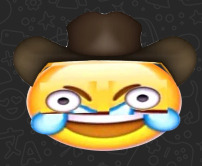
Okay so first off the Toltecs may have been one of the most influential cultures in Mesoamerica or... not a thing at all lol
youtube

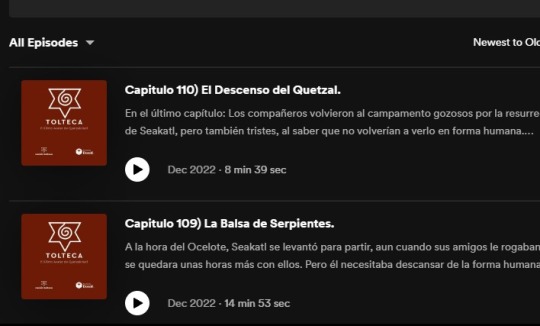
100+ episodes… no names or faces, only the pawnshop folks' icon and 'TOLTECA NATION'?
Like. Listen. A moneylending chain with 400 locations in this country HAS TO be a mafia and integrated into narco-govt cartels in order to exist.
And then on their website there is this!!!
WE ARE ALL QUETZALCOATL
At Fundación Dondé we are convinced that the greatness of Mexico is in its Civilization Legacy of more than 8,000 years; We proudly exalt this Legacy and we aim to share it so that more and more Mexicans know it and feel proud of who they are.
The history of Mexico is much bigger than what they taught us; Toltec Nation is an educational initiative to rescue the Toltec legacy of Anahuac (Territory of which Mexico is now a part) and to publicize the foundations and principles of Toltequity as a philosophy of life, as well as to propose a feasible response to contemporary challenges.
TOLTEC NATION
EDUCATION AND ACTION
From this wisdom of ours, we seek to move to support our communities, keep their traditions alive, recognize their languages (68 today spoken in Mexico!), know-how, the environment, and reconnect with a more conscious Mexico.
Our field of action is comprehensive, in addition to spreading the story, we rescue an ancient physical practice based on the Toltec positions of power called KINAM. To start practicing visit Agoralucis.

the alleged 'tOlTeCa nAtIoN' is just... their own org?? Like a subdivision of the pawnshop corp? Sure smells like some whitexican / corpxican self legitimising HorseShit & not an organic endeavour by indigenous ppl. And now they mention a new agey cult sounding name w/ no added context, just, like, "look em up if you really wanna". so I did! lol

Glorious. Really digging the space glitter background on the lady who claims to cure hypertension, DIABETES AND CANCER by just, like, BREATHING RIGHT, DUDE! TRULY TUBULAR
DSLKDJFSSJDKLSFJ
Anyway. the shit we were looking for is right after her in the carousel

Some certified whitexican flavor... anddddd
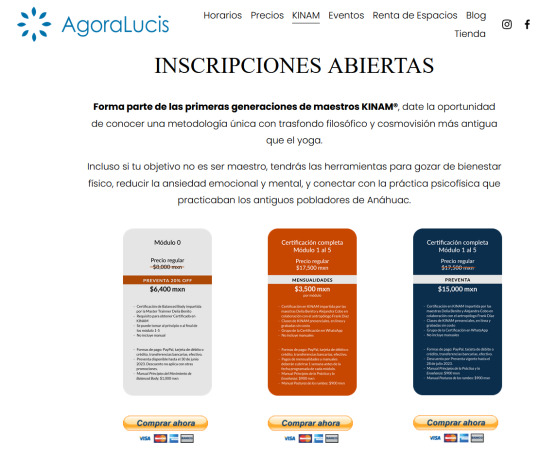
THERRRRRE WE GO! Give us 400-800 USD to become a Certified Instructor of Totally Real NonYoga (which btw is OLDER THAN YOGA!!!!1!111!)


In, predictably, a huge fuckoff space nestled in one of the peak "Rich Pieceoshit" parts of town, decked out in full "cult chic" blindingly white decor

Or you can get the vacation package! That includes:
"3 days and 2 nights of lodging. Food, drinks and snacks, 2 temazcales, cocoa ceremony, 1 practice of KINAM daily, meditations, breathing techniques, NAHUALIC TECHNIQUES, talk about toltequity and dance five elements"
---
Eventually, I hit the motherlode, a blog with glorious "2000s lunatic" aesthetic and deranged contents to match
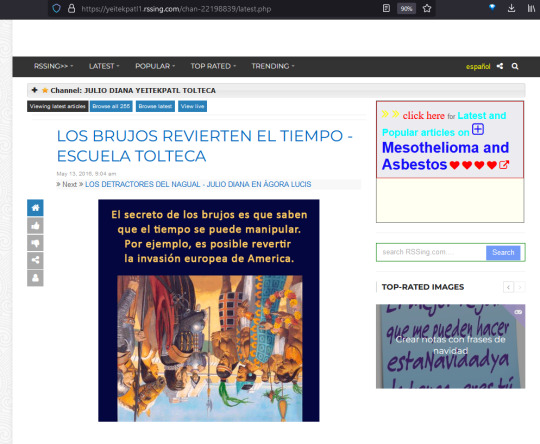
I MEAN......
The title goes: "WIZARDS TURN BACK TIME - TOLTECA SCHOOL"
The stuff in the caption is "The wizards' secret is that they know time can be manipulated. For example IT IS POSSIBLE TO REVERT THE EUROPEAN INVASION OF AMERICA."
I SURE FUCKING WISH IT WAS, JULIO, BUDDY!!! MAYBE THAT WAY YOU & THE SHIT YOU PEDDLE COULD'VE BEEN AVERTED 💀💀💀
There's also a video of a talk the guy gave at the fancy schmancy yoga place, but he apparently usually does events along... Crunchier lines, graphic design and location-wise:

The events apparently emphasise the PROPHETIC ASPECTS of sacred maya & nahuatl literature 💀 and the "CEACM", the "Center for Archaeoastronomic and Calendaric Studies of Mesoamerica", is populated by Grifters Galore alongside our deranged friend Julio

"SCIENTIFIC ADVISER" SURE 💀

And finally... a post where he rages against the horrible terrible no-good "ONLY FAKE RETIRED EX-NAHUAL" who exposed their bullshit:

"At this web address, the only retired fake nagual that exists in Mexico makes a series of malicious, defamatory and insulting comments about me and some friends, especially Master Frank Díaz. The title says it all: "a sect destroyed". The funny thing is that there has never been a kinam sect, so you can't destroy something that doesn't exist. This leads me to consider that being the product of the sick imagination of this guy, he really IS the creator. So then you could believe that now it is "destroyed". A creator can destroy his work as many times as he wants."
the giiiirls arrrrrre FIGHTINNNNGGGGGGGGG!!!
---
So we have a happyish ending: this shit is sooo fucking shameless and out in the open that there is already a pretty great, comprehensive site exposing it. It looks like they're only parting goofy ass whitexicans incapable of googling with their money, so not as bad as it could be.
The site is here ( https://kinam.org/ ) and it's SUCH a gem lmao:
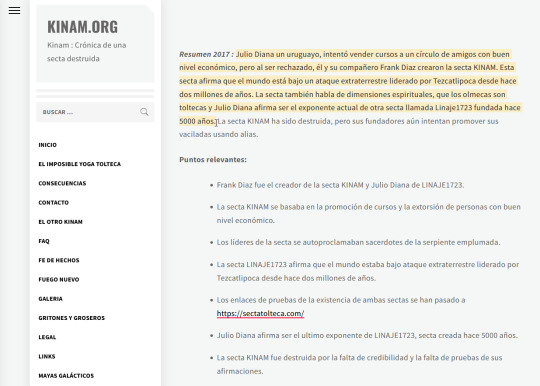
TITLE: Kinam: Chronicle of a Destroyed Sect
MENU: (including this bc it's hilarious trust me)
Start
The Impossible Toltec Yoga
Consequences
Contact
The other Kinam
FAQ
Faith of Facts
New Fire
Gallery
Loud and rude 😹😭
Legal
Links
GALACTIC MAYANS
More about
Summary
Sustained Reaction – Funny Interview
Sustained Thread
Notice of Privacy
"Summary 2017 : Julio Diana, a Uruguayan, tried to sell courses to a circle of friends with a good economic level, but when he was rejected, he and his partner Frank Diaz created the KINAM sect. This sect affirms that the world has been under an extraterrestrial attack led by Tezcatlipoca for two million years. The sect also speaks of spiritual dimensions, that the Olmecs are Toltecs and Julio Diana claims to be the current exponent of another sect called Linaje1723 founded 5000 years ago. The KINAM sect has been destroyed, but its founders still try to promote their vacillates using aliases."
It goes on a little bit and includes links to proof & shit...
---
TRULY I feel invigorated, amused, entertained beyond measure. I fucking love rabbit holes into silly cults, especially when nobody dies (that I know of? also this whole post is like. Allegedly™, In Minecraft™, none of this happened for real 😊).
i'm....................... need a drink after this lol
#viitalks#LONG ASS POST warning#like... i want a podcast about THIS SHIT#not the cringefail ad for the cult's expensive ass certifications & courses & vacations & shit#lindo y jodido#ñposting
4 notes
·
View notes
Text
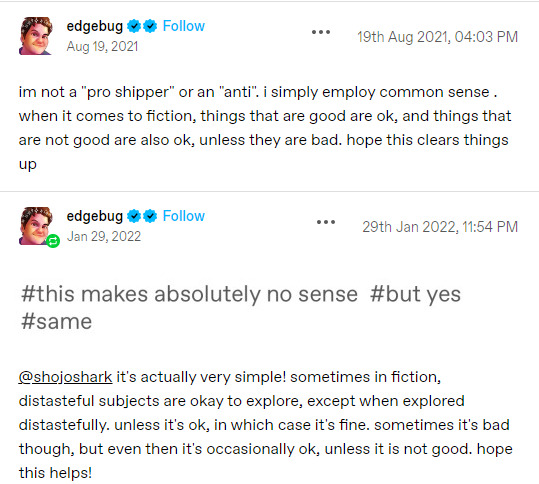
post here
DISCLAIMER BEFORE ANYONE SAYS OR ASSUMES ANYTHING ABOUT ME: i am not a proshipper. i am not an anti. i do not use any shipping discourse labels because i've been actively traumatized by both communities and have no desire to put that label on myself. i am just a person capable of critical thinking who enjoys analyzing media sometimes. i do not condone harassment over fiction, and i also do not believe any form of media is free from critical analysis or criticism, especially if it includes harmful propaganda and/or portrayals of marginalized peoples/societies which serve to perpetuate or legitimatize a pre-existing societal bias. do not call me an anti. do not call me a proshipper. do not assume things about me in bad faith. ive got no time for that and ill block you if you do this.
i actually think i kinda have a grasp on what's being said here so lemme explain this bc this is kinda how i feel? i'm gonna explain as best i can since its nearing 3 am and im a lil tired. forgive me if i dont explore every angle of nuance here btw again im tired but the adderall is in my blood so.
ahem.
my main talking point is this: there is a difference between exploration of something, which can include varying depictions and portrayals of a subject, vs propaganda for something, which has the intent of swaying you towards one side or away from one side or blah blah blah you know what propaganda wants to do i'm sure
exploration of dark and taboo subjects such as CSA/SA/abuse in general, paraphilias, mental illness, incest, so on and so forth - especially when done by survivors of those things - are almost never propaganda, no matter how they're being portrayed. someone using fictional characters within a fictional context to cope with their own trauma is, 99.9% of the time, not trying to endorse that behavior in real life. they also often assume the people reading it will understand that they the creator are not trying to endorse that behavior in real life.
example: most people who create fiction based off the mafia do not actually want to be mobsters, nor do they think others should be, nor do they endorse the real life mob, even if their portrayals can sometimes be problematic in other ways and/or contribute to certain problematic societal ideas about gang violence esp when committed by white people, but that's an entirely different issue than the one at hand and has more factors in play.
a deeper example: while a work of fiction can definitely reveal certain creator biases and/or how the creator feels about certain topics, it doesn't mean that every detail in the fiction is weighted the same way. someone may have clear biases towards, for example, women, in their work based on how they write their female characters, but not condone murder in that same work just because murder is part of the plot and/or is framed as a net positive in the storyline. you can have a work which clearly shows a creator's true feelings or thoughts or philosophies or what-have-you on one topic, but not on another, within the same work. learning which of these is true and when is a learned skill. i can't tell ya to do it myself as i am not a teacher
despite it seeming like it should be easy, on the other hand, spotting propaganda can actually be really fucking hard. i am not here to talk about how to spot propaganda, and perhaps will reblog this at a later date with links on how to do that as i am too tired to both write this and look for reliable resources on doing that, so if you want that for now, sorry, you gotta search elsewhere. however, this difficulty often leads to the main conflict i see online:
people believe that an exploration or portrayal of a dark/taboo subject or a subject which contains something that is immoral or illegal in real life, which does not outright condemn that thing, and/or appears on a surface level to be a "positive" portrayal (air quotes bc what counts as positive changes depending on who you ask) even when made by real-life survivors of the thing being explored, is the exact same as propaganda meant to push the emulation of that thing or behavior in real life, by real people, to real people/others/whatever.
this is the issue i and others keep running into online, over and over and over again. people are unable to tell the difference, they are unable to tell the target audience of a work, they are unable to understand why someone would make something a certain way, and ultimately the material upsets/triggers/disgusts/bothers/etc them, and all of this leads to them treating the first group of media like the second. because of that, they assume those creating that content are encouraging its real-world application and that the creators think these actions are okay, or that they will/want to/have perpetrated those acts in real life as well. once they've decided this, it's essentially impossible to convince them otherwise
ignoring the fact that you cannot make these assumptions about a stranger online in good faith literally ever, this is a huge problem. a nazi creating propaganda indoctrination white supremacist fantasy fiction material is nowhere near the same as a CSA & SA survivor creating works of dark fiction/art to cope with their trauma, but a lot of people consider it one and the same because they literally are incapable of seeing the difference. they can't analyze either work by either creator, and are unable to see how the nazi's fiction is different from the survivor's. even if the subjects portrayed in the works are different, too
these people will also insist that any humanization of a villain they deem "bad" or "problematic" enough - which, again, is dependent on who's making those decisions and not any kind of clear standard - means that the creator condones/believes/enjoys those things the villain does, and people who enjoy that character also condone/believe/enjoy those things the villain does. the ultimate irony of it all, of course, is that these people are consuming the exact same media with the exact same characters and exact same story and exact same plotline as the people they are attacking, and many of those people also enjoyed that media. they just seem to think because they enjoy blorbo blingus The Good Guy(tm) instead of zorbo zingle The Bad Guy(tm), that makes them morally superior instead of, yknow, just someone with a different opinion who is reading/watching with a different lens than someone else
obsession with moral purity, moral superiority, and in general an abstract concept of morality, is what has ultimately led us here. in an attempt to be seen as "acceptable" by the masses of the world - regardless of whether they participate in fandom or not - for whatever reason one has, has led some of us to turn on each other within fandom spaces
fear of predatory abusers lurking in the shadows, as well as an inability to actually identify the signs of a predatory abuser caused by a society whose goal is largely to protect those same predatory abusers, as well as a sadly large and growing number of victims of abuse growing up online and sometimes being abused and/or preyed on online (as i myself was) who thus are hypervigilant for this sort of thing due to their own trauma, has all led to a willingness to attack and destroy anyone we think might possibly maybe sorta kinda be a little suspicious without a second thought to the actual probability of that person's guilt, as well as the inability to stop and ask ourselves what we're really doing when we attack people over fictional portrayals of things as well as whether or not these fictional hypothetical transgressions are truly worth destroying someone's livelihood and life over or whether they're something we can simply block and ignore and not worry about
simply liking or disliking something in media has become a source of literal panic attacks for a lot of people because they drive themselves mad looking for a "good, moral, logical reason" to like or dislike something rather than just accepting it for what it is
our lack of understanding combined with an unwillingness to be open to the possibility of alternative interpretations for anything has driven people to commit atrocities. someone is literally dying right now because of it. actively dying. will die soon. because of antis deciding their creations meant it was okay to lie about them being a pedophile (they weren't), get them fired from their job due to these false claims, resulting in them losing their health care, which has 4 years down the road, resulted in their eventual death.
we. must. do. better.
2 notes
·
View notes
Text
Requiem (Interactive Fiction Devlog #1)
(See my previous posts here.)
For today's dev log, I want to talk a bit about design.
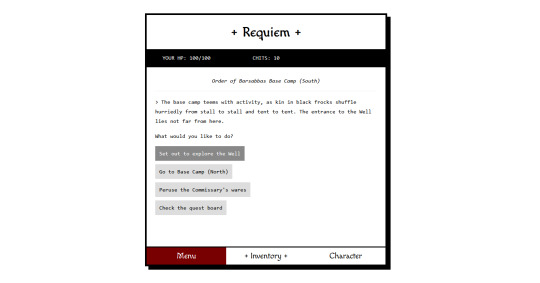
If you've played any of my games, you know that I heavily favor a blocky, high-contrast aesthetic. The Familiar was perhaps the "softest" game I've done.
REQUIEM's design is loosely based on "Neo-Brutalism," a sort of counter-aesthetic to glossy, polished skeuomorphic design.
More about this and my philosophy after the jump.
Here's my entry for Spring Thing 2022, Super Mega Tournament Arc! Notice any similarities? (I love a good box shadow.)

Usually in Neo-Brutalist design you're also using a lot of vibrant, often clashing, colors. While I did adhere to that with bright pinks and blues in SMTA! I'm eschewing it for Requiem in favor of a more stark black and white theme.
In the top image, you can see the one red Menu button. Normally, that's black and white. But on hover it changes. Only a small number of things do this in the game (battles have a lot of color, for instance, but very little else does), as a way to help manage information and intensity.
So why did I pick Neo-Brutalism?
Mostly, this all has to do with setting. I've imagined a futuristic monastic order, and I wanted the interface to reflect what they might have on their devices. I think the very rigid, boxy interface communicates that and mimics their theoretical black-and-white habits, while also working really well on modern screens.
And since this game is a rogue-lite/RPG, I also know that my players are going to be clicking through a *lot* of pages, and so I want to make sure information is eminently readable, and there are consistent design trends. Take, for instance, the one darker button choice in the menu up above. I'm using weighted menus every so often to help the reader keep up a good pace in clicking through things without having to stop and think critically about it all the time. Sometimes it's enough to just click the bolder button!

I also like this design because it was very easy to translate to mobile. I've done a poor job in the past designing for mobile, and so it was important that a vertical, smaller, responsive layout was a design consideration from the beginning.
And lastly, I've tried to be more conscientious about accessibility, especially when it comes to fonts.
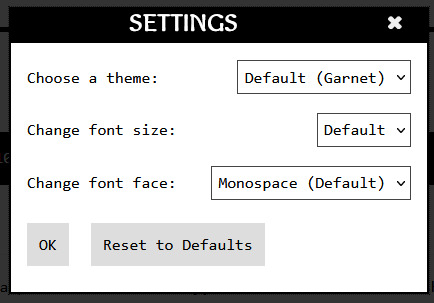
@manonamora-if recently helped me out in the Twine discord to figure out (based on this still very useful @idrellegames post [careful with copy and pasting]) how to put this in my own game. The "theme" changes the highlight color from red to green or blue. There are currently two font sizes to pick from (Default and Larger), and three fonts - Monospace, Verdana, and Helvetica. Nothing major, but a bit of customization that was not terribly hard to code in.
And that's it for this week's dev log! I've got a few posts planned ahead already, but I'd love to know what you want to see about my game. Feel free to drop me an ASK or comment with your suggestions.
#interactive fiction#twine#if wip#twine game#interactive fiction game#game development#interact if#twine wip#groggy requiem
6 notes
·
View notes
Text
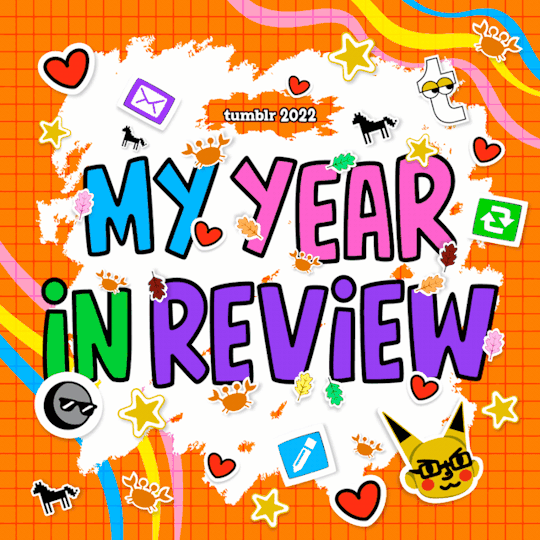
I posted 5,246 times in 2022
58 posts created (1%)
5,188 posts reblogged (99%)
Blogs I reblogged the most:
@bumblerhizal
@cinary
@mens-rights-activia
@bespectacledbookworm
@red-white-and-bolshevik
I tagged 1,801 of my posts in 2022
#lol - 930 posts
#art - 131 posts
#story ideas - 124 posts
#tumblr - 105 posts
#want - 54 posts
#worldiary speaks - 46 posts
#everything everywhere all at once - 37 posts
#dracula daily - 34 posts
#goncharov - 34 posts
#poetry - 31 posts
Longest Tag: 126 characters
#with google you can bring whatever you want into the sandbox but every time you touch a grain of sand google gets paid somehow
My Top Posts in 2022:
#5
I know, I know "it's such old media how can there be spoilers" but we all know that about 0.3% of us have actually read Dracula before and 99.9% of Dracula media we have seen bears 0 resemblance to the story we're reading now. With that in mind, please consider tagging your Dracula Daily posts and/or writing at the top of the post what day's entry you're talking about so folks can skip potential spoilers as needed.
41 notes - Posted May 16, 2022
#4
It's interesting to read people complaining about the community label feature when my understanding is (and correct me if I'm wrong here):
1. Your post will only get hidden if you mark it as sensitive. If you're worried about people not changing their settings, that's fair. You can make an FYI post and wait until you're confident before marking your work with a community flag. But it's not like the Nipple Ban™️ where an AI is rampantly tagging onions as sensitive. It's only if you mark your own post as sensitive.
2. This is what allows Tumblr to unblock porn. Which is something folks have been asking for ever since the aforementioned Nipple Ban™️. The idea is that if porn is hidden by default but folks can opt-in, Apple won't pull them off the App Store.
Maybe I'm missing something, but this feels like a win for folks making adult content? I know people on Tumblr engage less with creators these days. So it's fair to be worried that your reach will shrink. Make a few FYI posts to your followers. Don't mark your stuff as sensitive until you're ready. And then once you feel confident, try the feature out? See what you think. Give staff feedback.
51 notes - Posted September 26, 2022
#3
The thing about Everything Everywhere All At Once is that it could have been terrible. Like there were so many elements there that 99% of the time would not have worked together. But in this case it did???? Equal parts horror, comedy, family, philosophy, and fashion.
69 notes - Posted August 9, 2022
#2
Spent 2 hours watching this movie going "huh, this is a lot like Hamlet. Funny, even the guy's name sounds like Hamlet." Turns out. I'm watching the Norse myth of Amleth. Ya know. The Norse myth HAMLET WAS BASED OFF OF. No one's talking about this? We talk about Hamlet all the damn time and no one thought to say "btw, he ripped off a Norse myth. Just moved the H around and killed Ophelia." She doesn't die in the original myth, folks. It's just Shakespeare out here fridging and moving Hs around.
90 notes - Posted October 8, 2022
My #1 post of 2022
I think the thing that hit me the hardest about Everything Everywhere All At Once was that.... Evelyn in part brings Jobu Tapaki into existence through her abuse and Jobu, in response to her pain... destroys worlds and lives searching for a version of her mother that can help her navigate the pain.
The nuance of the situation was so beautiful to me. It's the... "You hurt me but I still want you to comfort me and I don't care how much I hurt you as I dig for that comfort."
130 notes - Posted August 10, 2022
Get your Tumblr 2022 Year in Review →
#tumblr2022#year in review#my 2022 tumblr year in review#your tumblr year in review#congrats to my number one post of the year being one in which I accidentally said ELEANOR instead of Evelyn and nearly died of shame#but clearly we were all so shook by the movie that y'all didn't notice and kept reblogging#except for that one person tysm for point it out!!#worldiary speaks#worldiary whispers
5 notes
·
View notes
Text
The Flavor of MTG Color Philosophy: White, the Color of Morals
Prologue
Before we really dive into this color philosophy I have to get the usual stuff out of the way. If you haven’t read the previous, albeit really long, article covering some of the more general aspects of the Color Pie then you should probably do so, even if only to decrease the chance that you ask a question I’ve already gone over or to make sure that I don’t have to repeat myself over and over(You can read said article on Tumblr here(https://douglysium.tumblr.com/private/672979718186975232/tumblr_r5hjo0WAWg1ycm9nu) and you can read said article on Google Docs here(https://docs.google.com/document/d/1y1d7vBZozSEmkARSeGYj4onyty6uAXlooaXKR9WxLOI/edit)). I should also mention that today I am focusing on MONO-White as a color philosophy. This means some specifics here may not apply to every color combination that includes White. It is also important that the color pie is ultimately a vague philosophical archetype and not a personality archetype. When I say things like a color’s “strength and weaknesses” there are definitely exceptions and know that I am speaking broadly and mostly talking about the behaviors and personalities that such a philosophy either attracts or encourages. Also, the color philosophies are all about what people find most important. So when I say something like White likes moral and order and Blue likes knowledge that does not mean that it is all those colors care about. Even White may care about the individual and Blue may still care about emotions. It’s just that those things come second fiddle to other things and should not get in the way. I should also note that because this video is about White and I do not have infinite time I will mainly be covering things from White’s perspective. So sorry if it comes off like I’m just bashing Black or Red philosophy at any point but I promise that those colors will get their chance to shine in their own articles one day.
General
One thing that all the color philosophies in Magic have is a little phrase that helps summarize their philosophy. This phrase basically has two parts, the end goal of the color and how they seek to achieve that. In White’s case, its phrase is “Peace through Structure.”
When it comes to these little phrases, the first part of the phrase is the overall end goal of the color and the second part is the means by which the color thinks those goals should be achieved. In this case, the end goal is “Peace” and the means is “Structure.” What this is supposed to tell us is that White philosophy is all about creating a world where as many people are happy and have what they need as possible and that it strives for a world with no unnecessary suffering. However, the only way this can happen is if enough people can work together towards this goal and put the needs of the community and the greater good while also doing things that aid said larger picture even if it might not benefit them immediately or personally. It is important to mention that White believes it is possible to create a world where everyone has what they NEED but not necessarily what they WANT. This goes into some of White’s themes of self-sacrifice since White argues that if we must choose personal wants vs the needs of the group we should choose what aids the most people possible. Now, despite what some may believe White is not necessarily naive or stupid and it understands that at the end of the day some people will need guidance or help to keep on the right path or encourage them to do the right thing. This is where White’s themes of “Structure” come in.
In the case of White philosophy, this idea of “Structure” can mainly be broken down into two parts, moral laws and civil laws. Moral law, as you can probably guess based on the very name, is defining and understanding what is and isn’t morally wrong and defining the broader concepts of right and wrong. One thing that is key to White philosophy is that it believes in an objective morality so it is important to encourage moral and good actions while discouraging immoral and evil actions in order to guide people to do the right thing and prioritize the bigger picture and group. It is important to consider that White is not saying it's always easy to do the right thing or be morally good, if it was then White would not have so much emphasis on things like law and guidance. Furthermore, not all moral laws are obvious religious doctrine and the like, with some being quite subtle. The most basic form of what one may consider a moral law is the idea of conscience.
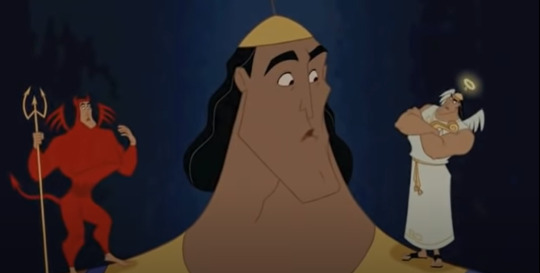
As we all know, conscience is something that’s supposed to guide you to do the right thing and may cause you to feel guilty or, if you are religious, have some sort of negative effect on your soul or afterlife destination in some way. It is also mentioned that the use of guilt, either by others or even just self-inflicted guilt, can be used to guide people or keep them in line.

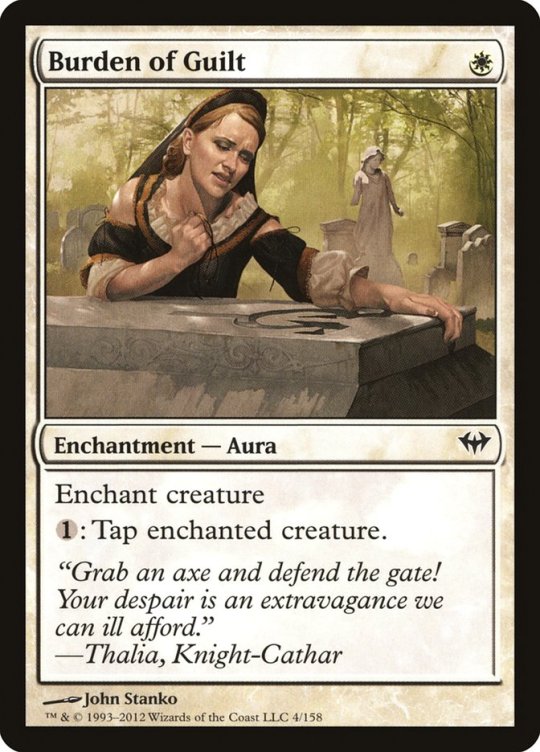
Of course, there tend to be repercussions for those who fail to abide by these rules. As pointed just now, some of these punishments can be subtle like guilt and it is important to mention that these repercussions can also include things like social ostracization and the like. It is also important to remember that not all of White’s methods for morality or a better world come from a state or institutional level level and, besides the earlier mentioned conscience and guilt, can also include things like personal codes, honor, chivalry, etc. Although, I guess you could still argue these examples still make use of guilt because what’s the point of feeling like you have been dishonorable if you and/or no one else cares. To this end, it is also important to consider the themes of civil laws as they occur in White philosophy.
Civil laws in this case are meant to clamp down, reduce, punish and/or prevent unwanted or immoral actions. If you do X there will be a consequence, as pointed out by Mark Rosewater himself in the “THE GREAT WHITE WAY REVISITED” article this most often takes the form of a loss of resources, usually money(think stuff like fines or parking tickets), . . .

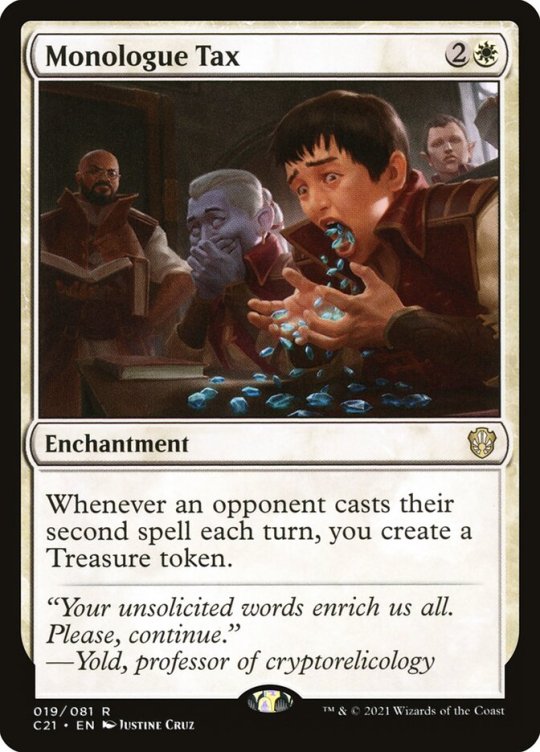

and/or a loss of freedom(such as prison, house arrest, confiscation, etc.).
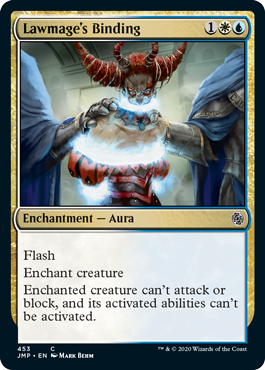



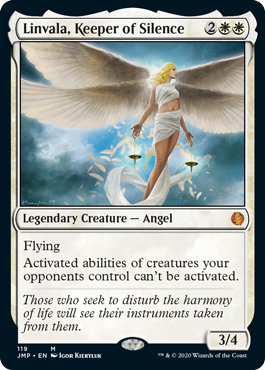
An example of a positive form of this in action would be if you see murder as being immoral so you and your society, group of friends, or what have you may decide to put into place rules and restrictions that make murder illegal as a deterrent and by extension punish whoever commits murder and potentially rewards those who don’t.

It is important to acknowledge that White doesn’t ONLY use punishment to get people to do the right thing as it can and does use positive things to encourage people to do the right thing. For example, if guilt is a negative emotion caused by doing something wrong then fulfillment, pride, and/or satisfaction can be used to reward people for doing the right thing. There are, of course, rewards outside of just emotional ones, such as rewards, protection, privileges, etc..
It is important to remember that this tends to make White in general, but not always, a defensive and reactionary color in both gameplay and philosophy because of the fact that White usually doesn’t want to go around punishing innocent people, so it tends to either reward those who stay in line or punish those who actively step over the line. Not to mention that White’s ideal world is one with as little unnecessary suffering as possible and so it usually tries to avoid inflicting it if possible.

Plus, White’s belief in moral and immoral actions means that it usually needs a moral justification to do something. Killing in self-defense is probably fine for most of those who believe in White philosophy but killing a person just because you felt like it isn’t going to fly.
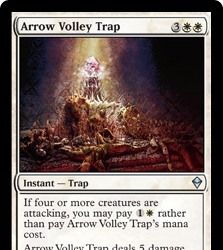


This also means that White’s goal is usually to protect people, whether that be from themselves or others. However, White can become more proactive if it sees something as a moral threat or evil or if it feels it has to do so to protect others. White is definitely not saying you should just sit around and let someone you know is about to hurt someone hurt people or let people get hurt.
At the end of the day, as pointed out by Marro, in the case of White moral laws are meant to be a guide for how you should think and civil laws help control how people act. This helps ensure that individuals are working for the benefit of the group, helps protect people from either themselves or others, and helps encourage people to not do immoral things. The focus on moral and civil laws mean that White tends to put emphasis and importance on things like religion, law, court systems, politics, government, honor, and chivalry as these are all things that help keep people on the right track and if used correctly can help avoid unnecessary conflict while also making sure people get the things they need while encouraging people to put the needs of the group above that of their own wants and desires.

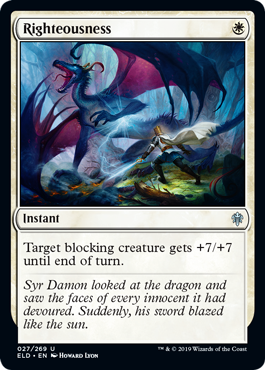
White’s emphasis on the group and others over the individual and individual wants also leads to an emphasis on community, cooperation, self-sacrifice, charity, strategy, organization, and even the military(as it involves many individual soldiers coming together to create an army that is more powerful than any single individual person in order to protect their cause or people as well as take down dangerous threats. Also because White believes in good and evil it is willing to fight for good and against bad things or fight to protect others).


Requirements
In order to hopefully help you get a greater understanding of White philosophy and its beliefs, I think it is important to beg the question of what does one have to believe in to be White aligned? What are the most basic barebone ideals you have to have in order to be White-aligned? Now it’s important to remember the color pie is a vague philosophical and value archetype. The color pie is ultimately about VALUES and IDEALS. A White character can end up being hot headed and selfish, although they would usually see this as a flaw or mistake or righteous anger, and not every person with morals is necessarily White or Mono-White because they may value something they deem more important. Also, this article is specifically about Mono-White so these requirements are only meant to apply to just White and any color combinations that contain White mixed with other colors may not necessarily follow the same rules, for example, it is possible to be White-Black aligned and not believe in an objective morality.
First off, in order to be White-aligned, one must believe in some sort of objective morality. This belief in an objective morality often gives White religious themes and iconography in Magic, since most religions believe in some sort of objective morality or proper way to live and this factor ties back to the thing about moral laws in the previous section, but I would argue that you don’t necessarily need to be super religious to be White aligned. You just need to believe that there are things that are moral and there are things that are immoral, that there is good and evil in some capacity, even if we have yet to fully discover this objective morality. This also means that in White’s eyes the ends do not justify the means. If you need to get something done you should do it right.

Secondly, and most obvious, at the end of the day one must believe that the needs of the many outweigh the needs of the few. To be clear it’s not that White is literally incapable of caring about the individual or argues you should never treat yourself but rather that these things shouldn’t come at the cost of other people and you should go with whatever option helps as many people as possible. This also extends to encouraging forms of selflessness and putting others ahead of yourself. Now, this doesn’t mean that White is saying to literally just do whatever someone tells you as long as it's for a group because remember it still believes in morals and the right thing so it wouldn’t automatically argue that you should accept that offer of unpaid overtime on a graveyard shift just because your boss asked you to in order to help the company but understand that sometimes you will need to make personal sacrifices to help others.

White’s goal is basically to do the right thing and help as many people as possible as it also must believe it is possible to create a hypothetical world where everyone has what they need eventually.
A Colorful Quote
In order to hopefully better understand where each color is from, even if you may ultimately disagree with it, I thought it would be helpful to pick a quote that I felt really resonated or matched with the color's themes in order to help package the color in a philosophical form of thought you may be more familiar with or understand. In this case, I have picked three, one of which I have already used in this very article already.
"The single raindrop never feels responsible for the flood" -Douglas Adams. I feel like this quote does a pretty good job in showing why White believes so strongly in the power of the group over the individual and how what individuals do can add up, for better or worse. Yes, technically a single raindrop isn’t going to hurt anyone or do anything but in White’s eyes we all have some level of responsibility in doing the right thing, and with its emphasis on the group it understands a lot of these things can add up. It also helps highlight why White encourages attention to detail and does its best to try to keep people on the right track through things like laws and rules.
“Treat others as you would like others to treat you.” I feel like this simply helps people understand that one of the things White cares about is fairness and justice, which makes sense for the color all about morals, right, and wrong. A color like Black usually won’t necessarily care about treating people fairly or how it would want to be treated as long as it gets what it wants.
“With great power comes great responsibility” is probably one of the most White aligned quotes I can think of. While Black might say you should use power to take what you want and live a nice life and Red says you should do whatever you want with your power, it’s yours after all, White says you have a responsibility and moral obligation to use your powers to help others and to make the world/society a better place.
The final quote “The ends do not justify the means.” White believes in an objective morality and thus there are lines that it argues you should never cross. This also means that if you are doing something or trying to achieve a goal you should do it right and not at the expense of others unless it is truly absolutely necessary to reach a goal that has a solution to the needs of the many. In fact, if forced to pick in a trolley car problem-esque situation White would usually argue that whatever option saves the most lives is the right answer since it generally views most lives as equal. The needs of the many will ultimately outweigh the needs of the few.
Philosophical Strengths
Nothing is truly perfect and that goes for the colors too. While I will be going over White’s philosophical weaknesses I will first be going over White’s philosophical strengths in order to show the upsides and positives of following White's philosophy.
The most common one you see mentioned is how White encourages a propensity for teamwork and organization. Due to the fact that White is all about trying to put others first and putting the needs of the community over one’s selfish desires, it makes sense that White tends to do a decent job of encouraging people to work together with others. Since it is able to see the bigger picture and values putting aside selfishness. White is definitely less likely to stab you in the back for a quick buck than Black and will probably tend to be easier to reason than Red.
This emphasis on organization, teamwork, and institutions can also lead to White having many people joining its cause and it can make it very hard to take down in the grand scheme of things. Since White believes in the group over the individual it usually acts and creates things with that in mind. This also means White tends to spread out its power since it's all about individuals coming together to accomplish a bigger goal. Think of it this way, killing one soldier in an army of hundreds isn’t going to do much and likewise White tends to encourage similar groups of many people working together like an army or team towards a goal. If you want an example in Magic itself, if twenty tokens are swinging at you then a single Lightning Bolt or Unsummon isn’t going to save you since on their own they will only remove one token of an entire army attacking you. Then you have to also consider White’s propensity to use things like laws and morals to set up potentially complex systems used to protect and/or control people. When used correctly this plays into another one of White’s common strengths, stability. Since White is all about the bigger picture it sets up all kinds of stuff to keep things in place and this can make it very arduous or hard to take down since you not only need to deal with individual people but potentially an entire system since White usually at least tries to make sure these systems will last, whether or not any given system is good is another matter. This also means that White tends to know how to use laws and rules to get what it wants if it has the chance. The focus on community and the bigger picture also tends to encourage a detail-oriented way of doing things which can aid it in organization and using things like rules. Plus, laws can be used to potentially restrain or hinder threats to White. In the best-case scenario, White can basically force someone to deal with them on White’s own terms.

Terms that White will probably be fine with or used to working under but may be a serious hindrance or setback to people fighting an uphill battle against those things. Basically, if you want to take out White it’s usually going to force you to think on a large scale, whether that be a large-scale attack or political movement.
White is also a color that tends to encourage discipline. White is all about planning ahead and doing what’s right for the long term, think of going to Church every Sunday to help you morally, training every day to become a better soldier and help aid your army, practicing shots to become a better play for your team, etc..
Philosophical Weaknesses
No color is all upsides though, so what are some common weaknesses for White philosophy?
Well the first and most obvious weakness is that White can often lead to inflexible and/or stagnant ways of thinking. Firstly, White is by default the color that tends to offer the least wiggle room philosophically since it believes in an objective good and evil of some sort which means it has the fewest gray areas and it encourages people to see the world in, ironically, black and white terms. This can also stunt potential creativity and can encourage conformity to an unhealthy degree since White will obviously not want to do anything it sees as objectively evil and it wants to make sure everyone does the right/good thing. However, this can spiral into forcing everyone to be one way if White believes that way is “good” or is for the sake of the community and bigger picture. Everyone has a specific role for the sake of the greater good and you must be sure that you are helping the collective.

Not to mention that it is usually a lot harder to convince someone of another opinion or new way of doing things if they see whatever you are trying to pitch as evil and whatever they are doing is good. Plus, due to White’s use of law, you may also have to contend with attempting to change entire laws. This is also where White’s use of structure can come to bite it in the ass since this use of it can potentially make things like the changing of laws or opinions slow to a crawl and extremely hard to change. Not to mention that White is probably going to want things done by the book even if you do want to change something which can of course suffocate and slow down anyone who attempts to change things in a way that White doesn’t approve of and playing by the rules to get the desired result may take even longer and make potential innovation more difficult.

Essentially, White’s reliance on structure, morals, and thought can make it very inflexible and extremely slow to adapt and change. Also, since White tends to be caught up on specific details because of the bigger picture, how everyone needs to come together it may, and morality it can get caught up in something that might not be a big deal. Like maybe the skirt someone wore only goes down to one inch above their knee as opposed to exactly at the knees, maybe that kid wore a red shirt to school instead of a white one, or maybe Jimmy showed up 1 minute late to work. It is by no means a stretch to say that at its worse White can encourage authoritarianism and even become an enemy to free thought or any other kind of deviation. Now, this isn’t to say that all White characters are heartless and won’t give any leeway or forgiveness for anything but White philosophy can definitely encourage being uptight and by the book based on how different parts of its philosophy come together. White’s potential inflexibility can also mean that it can end up restraining or hindering itself with its own laws or rules as it attempts to follow them. The easiest example would be someone who vows never to kill no matter what with no exceptions. This can potentially trap the one following the rule in an awkward situation if they need to say kill in self-defense or something.
Another potential issue White may have is that of discrimination in some form. Now it is important to note that it’s not like White-aligned characters are necessarily racist or anything and White does also believe in equality so they can easily be a champion for rights and equal treatment. On the flip side though, White’s emphasis on moral structures and objective morality means it will usually have fewer qualms about excluding others who think differently because White could see those ways of thinking as immoral, evil or dangerous. If someone’s belief falls outside of what they deem to be acceptable, even if said belief is harmless, then they will either punish them or try to guide them back on the right path by trying to get them to conform.
A final weakness that White philosophy often encourages is the neglect of the individual. Now I want to make something very clear. It’s not that White doesn’t care about individuals, some people think that White is a heartless machine willing to do anything for the greater good and that it will just throw away people’s lives continuously and constantly. Which is a weird conclusion to come to because the whole point of White philosophy is that we should strive to make a world where as many people are happy and have what they need as possible. So it’s not like White usually enjoys taking or sacrificing lives, in fact White philosophy definitely encourages empathy and selflessness so watching someone else die is something that it will rarely find pleasant. However, it still prioritizes the needs of the community and the many over the needs of the few because that is ultimately what will help the most people. This means it can sometimes disregard or neglect the individual.

It’s not that White never props up individuals, especially when it comes to heroes or role models, but those tend to be because they help serve a moral or bigger picture, ie someone saved a lot of people, heroes, propaganda, they're a good leader, they’re a good person, etc... So when White makes arguments on why you should do something it is often based on ethics or the bigger picture so it may end up disregarding individuals' wants and desires when trying to appeal to people. This is to say that White tends to be really good at appealing to groups and communities but it might have a harder time appealing to individual people since it wants to focus on the needs of the many over the needs of the few. Not to mention that White is totally advocating to sacrifice one life if it means saving the lives of hundreds.
One thing you might have picked up on or seen throughout this article or Magic, in general, is White can encourage a controlling mindset. White is trying to do what’s morally right and it wants as many people as possible to do the same. This means that if White thinks it knows what’s right it may do what it perceives as being good for someone or a group without giving them enough choice in the matter because it’s trying to do what’s best and it may even think it knows what’s best for them and that they should prioritize what’s best for the group. White can definitely encourage a “father/mother knows what’s best vibe” since it may force things upon individuals in the name of doing what’s best for that person, society, or group.
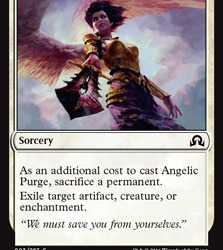
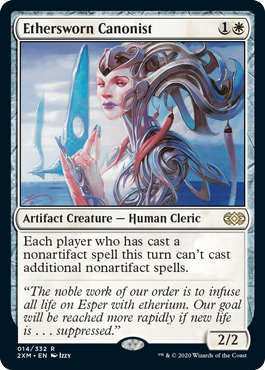

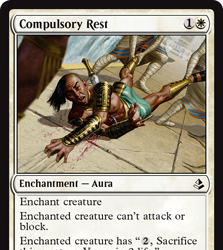
Common Misconceptions
One thing I’ve noticed about the color pie is there tend to be a lot of misconceptions about it in general. This is understandable because most people aren’t losers who will read and listen to all of Mark Rosewater’s color pie teachings and probably won’t technically need to know much about it outside of general gameplay mechanics. Although, of course, I still want to tackle these common misconceptions to show some of the work and understanding that Magic’s designers and writers have that people may overlook and to hopefully make any conversations someone may have about the color pie more informed, nuanced, and productive.
Easily the most common misconception that you see being reiterated and dispelled all the time is that the White alignment is used to indicate “good guys.” I think lately this misconception has been less prevalent and is only held by extremely new players or players who have as little interaction or knowledge with the color pie as possible. Either way, for the sake of those who may not know I should address this. The most obvious way to disprove this point is that White-aligned characters can make mistakes. A White-aligned character can do something that is bad in hindsight or convince themselves they are doing the right thing or what’s best for people. However, to dive further into it I think a lot of this stems from Magic itself and how White often seems to have a “heroic” or “righteous,” along many other traits people would consider good, bent to it.


Especially when White is the home of creature types like angels, figures that are almost always associated with the idea of “good.”

One thing to remember about analyzing and understanding the cards and how they are portrayed in Magic is understanding what each philosophy’s ideal is and how it wants to see itself. White is a color that believes in an objective good and evil morality. If one has such a belief why would they want to do things they know are bad or evil? Obviously, they are going to try to do things they perceive as good and will think there are good and bad people. A color like Black wouldn’t really believe in heroes, or at least not objectively good ones, and since colors like Black don’t believe in an objective morality and Red is about just doing what you want they are not going to see what they are doing as heroic and are less likely try to sugarcoat stuff as much as White. What I’m basically saying is that the reason White might appear “good” on Magic cards is because it sees its goals and what it's doing as good and even if it is failing it wants to do the right thing and encourage good morals. This doesn’t necessarily mean that all White-aligned characters are good rather that most White-aligned characters are going to see their actions and stances as good, morally just or at the very least that’s what they are striving for(because most people who believe in good and evil are going to not want to be evil). Plus, while I do think Magic could do a better job representing it, there are a few White-aligned villains that most people would consider evil, Heliod, Elesh Norn, and Takeshi Konda are some notable examples, and the Azorius are definitely an example of an antagonistic White faction, even if they are also Blu. If you were to ask any of these people if what they are doing is right, just, good and/or necessary they would probably say yes, unlike a Black character who may not care about doing what’s “right.”



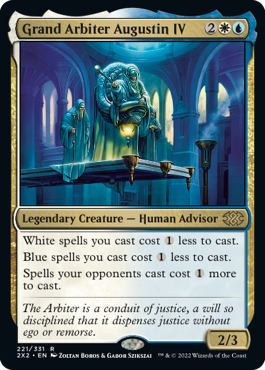
I guess the best way to summarize this is that most White-aligned characters have good intentions, and this is reflected on their cards and portrayal, but simply having good intentions does not make what you are doing right or mean you’re the good guy. I would also argue that part of the reason for this misconception is that humans, in general, tend to lean towards having White in their alignment or color philosophy. Most people believe in some sort of moral baseline and think being a selfish or greedy person is usually a bad thing. Also, within media, in general a lot of traits that would be associated with Black tend to be cast as villains(such as being power-hungry, greedy, selfish, and stuff. Also if a villain is the embodiment of all evil or something that implies some sort of objective moral truth in the context of the narrative). Meanwhile, heroes in media tend to be selfless and the like. This is something I’ll probably go into more detail in another article covering humans as a creature type or something.
Another, more subtle, misconception I’ve seen is that White cannot be tricky or underhanded. I do see where this is coming from since White is the color philosophy all about honor and fairness.
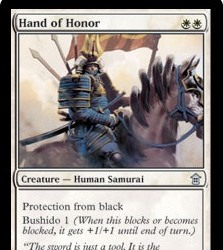
However, there’s a major difference between being fair and not being tricky or using strategy. The best way I can put this is that yes White may not use as many underhanded tactics as Black or Blue because it doesn’t want to be unfair, dishonorable or do evil things but that does not mean it isn’t willing to use tricks that fall, or technically fall, within their accepted moral range.


Let me put it this way, White philosophy says that the ends do not justify the means but there’s a massive difference between “the ends do not justify the means” and “you cannot use tricks or cunning.”
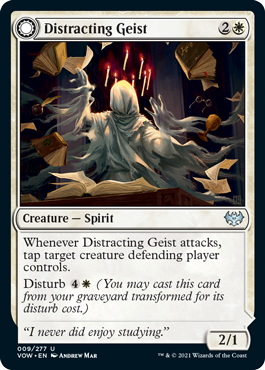
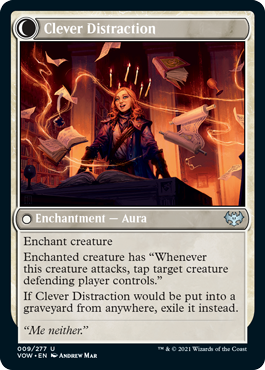
Not to mention that White is also philosophically all about justice. This means that sometimes it may be a bit more ruthless or underhanded when dealing with something it deems evil. White also definitely encourages an “eye for an eye” way of thinking and probably isn’t going to just sit around watching the people they want to protect die from a bunch of underhanded tactics even though White still has lines it is going to be unwilling to cross.

I think it’s easy to assume that because Black is all about gaining power for yourself and White is about being selfless and putting others first that White straight up does not care about power. This is sort of true? White doesn’t think power is the most important thing and would philosophically argue that you need to be willing to give up individual desires and power if it helps the community function or other good people prosper. However, this does not mean White completely disregards power. Power when used correctly or in the hands of the right people can be used to help and rescue people. I would go as far as to say that the quote “With great power comes great responsibility” from Spiderman is one of THE most philosophically White quotes out there. Black says you should use power for yourself, Red says power gives you freedom and you should do what you want to, but White would argue that ultimately helping others and morals are more important than power. So when you are given a great amount of power you have a moral obligation to put others first and use your powers first and foremost to help people.

Also, there are some things you shouldn’t use your powers for. Using power to do things like steal or force your way to the top would usually be frowned upon by White. Superman, at least the default Superman and not some weird alternate timeline where he is evil or landed in Russia or something, is definitely a character that abides by White philosophy.
I’ve seen a lot of talk about White as a villain as a form of pushback and rebuttal against the idea that White is always the good guy. I think this is all well and good but this does end up coming with its own misconceptions. The two most common I see are that colors like Black and Red are “rebel” and “underdog” colors while White is the oppressor and that White does not care about individual people at all. Firstly, While White is a philosophy that can easily encourage oppression it can also easily be the philosophy of rebellion. To begin with, Black is a color philosophy that can easily encourage just as much oppression as White, but for different reasons. Black argues that you should prop yourself up and gain as much power as possible. If this requires you to step on the downtrodden, plebs, or persecuted so be it. If it requires you to use bribes or leverage your social/economic status against people then so be it. Black is also totally willing to use laws to keep its power if it knows people will listen.



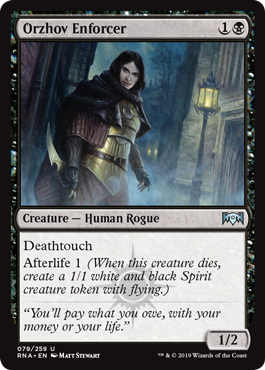
Plus, if you’ve read the article so far you should know that one of the things White cares about the most due to its beliefs in moral objectivism is justice, fairness, doing the right thing and equality. If White believes a group is being mistreated or unfairly hurt it is going to try to help them. Not to mention that if White believes the rebels are in the moral right it is going to want to side with them.

Ultimately, White philosophy encourages sticking up for the unfairly treated just as much as, honestly probably more than, Red or Black does because it believes everyone should be treated fairly, putting others first, and moral things like potentially basic human rights since it believes some moral lines shouldn’t be crossed. White is also a philosophy that argues you should always be trying to do the right thing. I guess the best way to describe it is that one is a Black and/or Red rebel their philosophy means they’re probably fighting on behalf of the individual, freedom to do what they want, or for themselves but if White-aligned rebels usually fight for justice, the many, fairness, and morality. In essence, I think all three philosophies have a rebellion and stand up for the underdog theme but the reasons for why they do so are different.

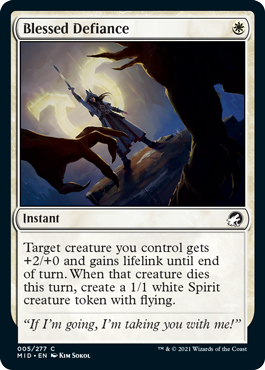

When it comes to how White feels about the individual, yes White is a philosophy that argues the needs of the many outweighs the needs and wants of the few. However, White ultimately wants to create a world where the fewest number of people suffer or don’t have what they need as possible. So to say White is a philosophy that straight-up says you shouldn’t care about people at all and only care about groups is incorrect. White also tends to view people, assuming it doesn’t see them as evil, as equal, and thus their lives, desires, and needs are all equal by default. White philosophy simply argues that the needs or wants of an individual should not come at the expense of the greater good, the community as a whole, or other people. If you want an American example of this take the idea of free speech. With free speech you can say whatever you want and the government cannot arrest you or anything for it. However, there are some exceptions. The most common example is that you can't yell “FIRE!!!” in a crowded movie theater when there is no fire since that is not only inconvenient but could lead to someone getting hurt. Just because you have the right to wield a weapon does not mean you can just hit whoever you want with your sword and others have a right to not get stabbed without permission. Meanwhile, a color like Red would say your freedom and desire should trump everything else and everyone should be able to do whatever they want. To White, the needs and good of the group and others trumps individual desires that come at the expense of others. I would also like to argue that democracy(especially direct democracy), at least when it’s functioning properly, is definitely a political system that falls under White philosophy since the idea is that it's the entire group coming together to make a decision as opposed to single individuals making decisions at the expense of the group. However, this is not to say that democracy is the only White-aligned political system and that White can’t use other more negative political systems, such as authoritarianism. White also understands that sometimes bettering yourself as an individual or individually can allow you to better help others or the community, it’s just that bettering yourself should be done for the sake of the greater good. It is more accurate to say that White cares about individuality usually through the lens of a bigger picture or society and the individual’s place in it.
A less common misconception I’ve seen floating around is the idea that divinity and/or being a god makes one White aligned, like being divine or a god is a White-aligned thing. This is actually a little funny since technically a majority of gods we have seen in Magic do not have White in their color identity and I could easily point out the numerous Non-White aligned gods on Theros, Amonkhet and/or Kaldheim to prove my point and just move on.



Now this misconception isn’t completely unfounded but it’s still a misconception and will take some explaining. As I will go on later in this very article, yes White has themes of divinity or caring about the divine. There are two reasons for this. First off, White believes in an objective good and evil. So if something is labeled as divine by White it is probably saying it is holy or good while if it is unholy or demonic it is probably evil. This whole objective morality thing also tends manifest in the form of religion because if one believes in an objective morality then they usually believe it comes from somewhere and sometimes this somewhere takes the form of some higher power, like a god.

However, being divine or a god doesn’t make something White-aligned anymore than being a living thing makes something Green-aligned or being a machine makes something Blue-aligned.


It’s important to acknowledge that when you look at a Magic card you are probably viewing the events or actions from that color’s perspective. So what may be seen as divine to one color philosophy may be seen as something else to other color philosophies or even different people in the same color philosophy. There’s also the fact that depending on what kind of gods we are referring to there can be evil or neutral gods and not every god is necessarily just the good and divine kind of god. Plus, the other colors are capable of being religious albeit for different reasons and with different priorities.

What I’m trying to say here is yes White has a divine and god theme but it’s important to remember that it’s due to White’s themes of religion and morality and that Whites cards tend to view things from White’s perspective and also not all gods, even from a purely White-aligned perspective, are good and/or divine. Color philosophy isn’t some specific immutable trait someone is born with(because being born tall isn’t going to mean you’re Green aligned) but instead a worldview, philosophy and ideology not necessarily a state of existence(like good/evil, living/machine, etc). Of course it is important to remember that certain philosophies and ideologies will value certain things so said ideologies may encourage or look favorably upon certain states of beings as a good thing. I mean, imagine if people argued that being a god makes you Black-aligned because gods are powerful and Black likes power or if people argued being a god makes you Green-aligned because many gods embody forces of nature and the like. It really isn’t that simple.
Ally and Enemy Colors
This finally brings us to talking about White’s ally and enemy colors and White’s relationship with them. Things like “Why is this philosophy White’s “ally” and this philosophy White’s “enemy.” Due to the fact that this article is about White and is already going to be pretty long already I am going to be coloring the relationship between each color, as well as their agreements and disagreements mostly from White’s perspective since I don’t really have time to go into a deep dive of each individual color. I will however, cover how the other color’s view White philosophy later down the line in their own respective articles as a way to make sure that each color gets the fleshed out analysis they deserve. In the meantime for the ally colors I will start with the philosophical agreements White has with the color before moving on to the disagreements and then flipping that order for the enemy colors. On top of that, I’m only going to be going over White’s relationship and thoughts on the other colors and not color combinations. Color combinations like White-Blue and Green-White will get their own article dedicated entirely to them. So I won’t be going over things like the positive and negative traits of White-Blue. Only what White and Blue agree on and disagree on. Also, if you somehow don’t know what an ally and/or enemy color is you should of read my previous article and an ally color are the colors next to a specific color on the color pie while the enemy colors are opposing colors. So the ally colors for White are Blue and Green because they sit on either side of White while White’s enemy colors are Black and Red because they set opposite from White.
Ally Color: Blue
When it comes to considering why White and Blue are allies the two things that immediately stick out to me the most is the overlapping line of thinking in regards to the importance of forethought, planning and consideration and the desire to create a better world.
Let’s start with that first point because I feel it does a great job showcasing that if you want to fully understand each of Magic’s color philosophies you need to understand their relationship with each color in order to help highlight the similarities and key differences to reveal nuances you may not have noticed otherwise. Case and point we can understand some of the similarities between White and Blue by looking at their shared enemy color, Red. Red believes in “Freedom through Action.” Red philosophy says you should just follow your heart and do whatever it is you want in an attempt to reach a life that is as fulfilling as possible. If you want to confess your love to someone do it, if you want to punch senior citizens on the street then do it, if you want to create art then do it. This conflicts greatly with White and Blue. White and Blue both prioritize the big picture, end game and long term plans. From Blue’s perspective Red philosophy is just stupid because it seems to argue for ruining its own life or long term plans and progress just because it wanted to do something without thinking about what it needs and its action’s long-term consequences. White thinks Red philosophy is dangerous because Red philosophy is ultimately a selfish and shortsighted one. Red is saying YOU should do what YOU want even if it means hurting people or if those desires come at the expense of the group or community. If there is a table with twenty pieces of bread and twenty people White will say you should give each person one piece of bread to ensure everyone eats and Blue would probably agree because that is the most logical or rational option. However, Red wants to try to eat as much bread as it wants, whether that be twenty pieces of bread or no pieces of bread. In essence White and Blue are all about discipline and forethought(you cannot always have what you want and not everything you want is what is needed or helpful. Just because you want five pieces of bread doesn’t mean you should take five pieces of bread), which Red philosophy flies in the face of. White and Blue also both prioritize thoughtfulness, and long-term goals over what they see as fleeting wants and desires. White would argue that what you want isn’t always what you need and ultimately it prioritizes the needs of its people and others first and foremost. Blue sees emotions as potentially irrational and says that you should use knowledge and thinking to chart out what needs to be done as opposed to flying by the seat of your pants and making needles mistakes or errors. In a way White and Blue both have a serious problem with the chaos that Red champions, as they see the chaos as destructive and unproductive. To them doing things right is more important than freedom and doing whatever you want whenever you want. Blue also overlaps in its connection to law with White because of this reason.

Blue is trying to make sure things are done in the most logical and efficient way possible and rules can help make this happen while also making sure to guide people on the right path. White and Blue are also both philosophies that tend to value taking the path with as few risks as possible and playing it safe. While Red is all about doing what you want even if that thing is dangerous. Also, Blue’s emphasis on knowledge and forethought and White’s emphasis on the big picture and order means that both colors tend to encourage being very detail oriented. I guess if I had to summarize their philosophical agreement here, both colors believe in thoughtfulness and restraint and see Red’s philosophy as shortsighted and troublesome.

As mentioned earlier, another major overlap White and Blue have is their desire to make society and the world a better place. This means that White and Blue both tend to have an understanding of the bigger picture in mind and that only putting yourself first all the time can make things worse. White ultimately wants to make things better to promote peace and decrease the amount of suffering people have to deal with while Blue is all about “Perfection through Knowledge.” In essence, Blue wants to make the world better so it becomes more efficient and so both the world, and Blue, can reach their fullest potential and be the best they can be(this is also another reason why Blue has a bit of a law theme). Where White seeks peace Blue seeks prosperity and of course, prosperity can be a huge factor in creating a world of peace and reducing suffering.
As I always say though, if even just allied colors agreed on literally everything then they would end up being the same color philosophy and there would be no need for a distinction between each color and its allies. So what are some of the disagreements between White and Blue?
Well we can easily pick out a few of the obvious philosophical disagreements by looking at the specific placement both colors have on the color pie.
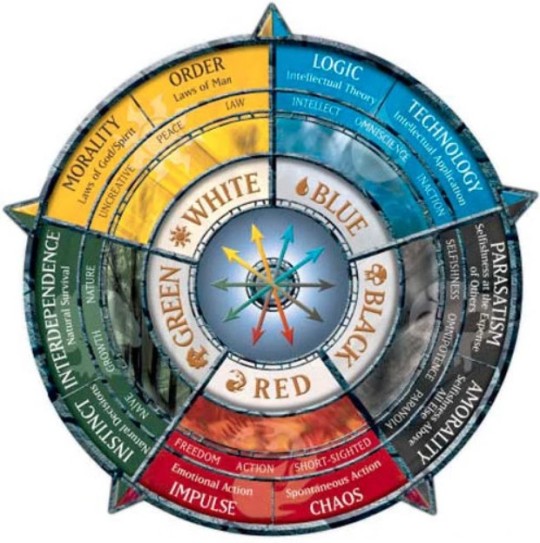
While White and Blue are right next to each other. Blue is allied with one of White’s enemy colors, Black. Meanwhile, one of White’s allies is Green. This immediately tells that Blue is more individualistic of a philosophy than White. Blue is also more likely to do things like lie or withhold information than White if it means furthering its own goals and White would argue you should almost always put others and the community or greater good first while Blue is less likely to do that unless doing so helps improve efficiency, reach its goals, gain information, aid a long term plan, etc... Thus, White believes Blue could be a bit more focused on society and the community. A major reason Green and Black are enemy colors is because Green thinks you should accept the world and your place in it for as it is and to put the ecosystem and nature above yourself. However, Black is about “Power through Opportunity.” It is trying to make life better for itself at any cost and does not care about a “natural order.” Blue philosophy puts a bit less emphasis on caring about people when improving the world. In essence Blue philosophy tends to want to improve things because it wants to learn and prove it can while White is looking out for the community. An example we have been given is in the article “PEACE, LOVE AND UNDERSTANDING” by Mark Rosewater. In this example we are given world hunger. White wants to end world hunger because White doesn’t want people to go hungry or suffer while Blue wants to end world hunger because it wants to use the knowledge it has obtained to see if it can maximize its resources and learn what the most efficient way to create food is. This also means that White is usually more likely to stop doing something once it feels like it has adequately helped everyone while Blue will keep pushing the limits and learn. Once White ends world hunger it is more likely to move on and focus more on other issues but Blue is more likely to continue trying to see how much food it can generate because it wants to obtain more knowledge. For Blue perfection is not an end goal but a process.
Blue is a philosophy that is also more calculating, data driven, and numbers based than White. Not to say Blue doesn’t care about anybody but it tends to be more concerned with bringing things to their fullest potential and making them as efficient as possible. Blue uses laws and shapes lives to bring out things to their full potential while White uses laws and shapes lives to help the greater good and make sure people do the right thing. Blue’s philosophy is ultimately one of self-actualization(the realization or fulfillment of one's talents and potentialities, especially considered as a drive or need present in everyone) and Blue philosophy sees things like structures and laws as just tools to help keep things running smoothly and efficiently rather than a means of protection and spreading moral goodness or moral ideas. White also wants to bring peace and help as many people as possible but Blue is more concerned with information, data and efficiency. This also means that Blue tends to have fewer moral lines it is unwilling to cross than White usually does since what Blue does and doesn’t do will tend to be determined by efficiency, numbers, and/or results rather than things like moral specific moral codes or doctrine. In essence, Blue is less likely to do something because it is morally good and just and is more likely to do something because of whatever reason it considers to be logical or most efficient. This also means that Blue is more likely to be willing to cross lines or push on the boundaries of things White thinks it shouldn’t. I mean, Blue is way more likely to do things like use unfair tactics to win a fight, lie to gain an upper hand. or actively manipulate other people than White is.



This also means that Blue tends to be a bit more secretive and dishonest than White usually is.

Blue’s philosophy also tends to encourage a bit more emotional distance than White does. White is all about caring about others and putting others first but Blue argues that you should use logic and reason before emotions (not that Blue inherently hates all emotion or anything. It’s just that to Blue emotions can be irrational and shortsighted so you should use your head and logic to think things through and make sure emotions don’t get in the way of that).
It is also important to consider that Green, White’s other ally color, is a deterministic philosophy that believes that everyone is born to be a certain way and can’t change that. However, Blue believes everyone has the potential to become whatever they want as long as they have the knowledge, time, and proper means to do so, something that is often expressed through technology. White believes in a more concrete world. The most obvious form this takes is an objective morality, since such morality is, in theory, immutable, but White is also a color that often has a heavy connection to tradition and believes that some things have been established or born a certain way and cannot be changed, i.e. parts of society, potentially your role in society, certain traits, etc. While Blue may see certain traditions as useful or worth keeping around it is definitely a color that champions progress and moving forward way more than White, after careful consideration of course, and Blue believes that under the right circumstances anything can be changed. Blue and Black are both colors that believe you are in total control of your own fate.
If I had to assign a description of their conflict it would be being guided by morals vs just advancement and/or progress.
Ally Color: Green
When it comes to considering why White and Green are allied the two things that immediately stick out to me the most are the overlapping line of thinking in regards to the importance of community and the idea that there is a right and proper state for things to be in as well as the fact that they often turn to the ideas of higher powers and bigger pictures

This first point can be highlighted by White and Green’s shared enemy color, Black. What White and Green abhor about Black philosophy it’s all about the individual. Individuals should be putting their own individual needs above all else even at the expense of others, the group, and, order. Black philosophy always values the individual over the group and the bigger picture. Black will and can thrive at the expense of others if given the opportunity. To Green, there are things that will always be bigger than yourself and should always take priority over the individual. White and Green both believe that there is a greater good or big picture that should always take priority and thus tend to prefer selflessness over selfishness and prefer to act with the welfare of the group in mind.


Green also has an eye for detail similar to that of White. Green understands that we are all interconnected in a complex ecosystem, web of life, food chain, etc. and that affecting one thing will of course affect the entire group or system due to domino and butterfly effects.
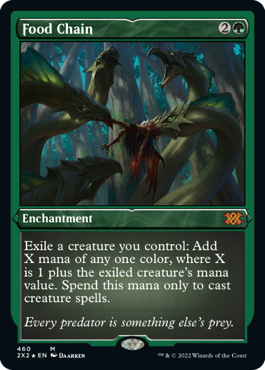
Both colors also support the idea of putting the needs of the group over the needs and wants of the individual. White uses laws and order to keep things in line while Green tends to call upon the natural order to keep things in line. These ideals tend to overlap in the form of traditions. White wants to protect its community and as many people as possible and Green wants to protect the ecosystem and the creatures living within it from outside interference. This also gives both philosophies a defensive angle since they are all about protecting people/creatures from outside interference.
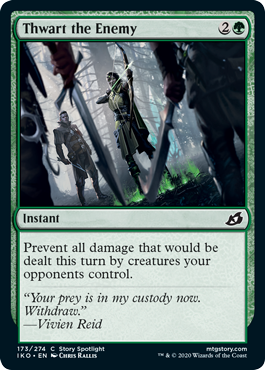
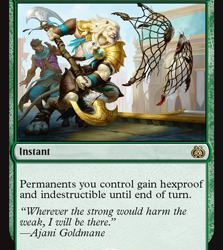
Both colors also care about order, White cares about order to help protect people and guide people in the right direction as they work together to achieve a larger goal for the group and Green cares greatly about the natural order and seeks to protect it. Both colors also believe that everyone has a place in their society and/or world and can contribute to it.
White and Green also believe that there is an objectively correct state for the world or the things in the world to be in. In the case of White this comes about due to its belief in morality and thus it labels certain things as good and certain things as evil. Obviously, White wants to create a world that leans towards good as much as possible and dislikes people doing evil things. Also, things that create evil or harm good/innocent things are bad for the world and must be dealt with. Green believes in the natural order and thus believes that natural state is the ideal state for the world and the things residing in it. Things that damage or interfere with the natural order must be dealt with. In essence White and Green both believe that there is an objectively correct state for things to be in and that there is a greater good. White and Green also tend to call upon higher powers or things bigger than the individual to guide both themselves and others. In the case of White this takes the form of morality, which often extends to religion and spirituality, and in Green this takes the form of nature and the natural order, which also often extends to spirituality, which can also lead to both colors often coming up with rules or guidelines on what should and shouldn’t be done and propagating the belief that some things should never be done because they cross the line, this tends to be reflected in how both colors tend to use tradition to keep everything in place. For White, those things would be things it deems immoral and for Green those things would be things it deems unnatural or as harmful to nature. Both colors understand that there are things bigger than us that determine what actions we should take and have a sense of responsibility in protecting something bigger than themselves.
Inevitably, White and Green still have some key ideological disagreements. Mainly about changing the world vs accepting it and how much they care about the natural order of things.
The thing about White is it is a philosophy that stresses actively changing the world for the better and reducing the suffering that people need to go through. This also makes it more proactive than Green. Meanwhile, Green argues that all we need to be happy and fulfilled already exists in the world, and in order to be truly fulfilled we must accept the world for as it is and not unnaturally change or attempt to reject it. Green is basically a philosophy that says you should go with the flow and stop anything trying to disrupt the natural flow of the world while White is fine with changing things if it leads to what it views as a better world. This is further highlighted by the fact that White is an allied color with Blue, an enemy color of Green that believes that everything can be changed and improved upon. Green philosophy tends to use things like the natural order to stagnate and try to prevent things from happening while White uses its morals to not only stop things but encourage people to actively change things for the better. Of course, there is also the matter that White doesn’t care about the natural state as much as Green because it does not believe all of nature is the end all be all. Green sees some poor sap get ripped apart by an apex predator and argues “That’s just how it is. We either can’t change it or should accept that we aren’t at the top of the food chain and that’s just the circle of life. Who knows what kind of effect it could have on the ecosystem if we were to try to prevent the creature from preying on people.”


Meanwhile, White would argue that we should save that poor person and prevent other people from being eaten, the food chain be damned. We should try to save as many people as possible and reduce the amount of suffering in the world as much as possible. White wants to do things like save as many people from dying as possible while Green thinks dying is not inherently bad and a part of the natural process. In essence Green is more concerned with how and why things die than White is. If something dies because it is hunted by a lion then Green would usually argue that it’s only natural that the prey fight back but if it dies then that is just part of the circle of life. In White’s eyes Green is way less concerned with helping the weak and defenseless and is more likely to be willing to let them die or be consumed if it means upholding the natural order. In this way you could argue that Green tends to care about the system and keeping it running. White’s laws are also built around morals instead of the natural order so White’s focus on civilization and law can conflict with Green’s ideals of nature.
This also means that Green may find White’s laws arbitrary. While White would probably chastise someone doing something like stealing an apple from someone else's tree Green would probably not see it as stealing. Likewise, Green has more emphasis on instincts and emotion. Green believes that you should follow your natural instincts, something that is highlighted by the fact that Green is allied colors with Red, an enemy color of White. Green would say that if you’re hungry you should probably eat till you're full as long as you aren’t doing something unnatural or continuing to eat even after you’ve had your fill while White might say you need to be patient and wait your turn. Nature itself can also be pretty chaotic, meaning Green does not love order as nearly as much as White. Random stuff occurs in nature all the time and that’s just life. Green is okay with letting stuff devolve into whatever it sees at its natural course while White wants to step in and actively guide and control things more often than Green, who just wants to accept the world for as it is. This also means that Green relies on structure less than White and is more willing to fly by the seat of its pants as it follows its natural instincts while White says you should also use forethought and morals first and foremost. Green is more likely to revolve around what it does and doesn’t do around biology and/or nature. White might say you should wait until marriage to have sex while Green may say that sex is a natural part of life and it is ok to have sex whenever you feel horny since that’s how nature does it. White thinks more things are, or should be, spelled out than Green’s more go-with-the-flow approach. Green is totally willing to let loose and go wild when White thinks it should restrain itself more often. Green is less likely to fight for a noble cause if it feels it isn’t disturbing the natural order, unlike White. Ultimately, as mentioned earlier, White and Green are guided by morals and the natural order which can come into conflict sometimes.
If I had to assign a description of their conflict it would be being guided by morals vs being guided by nature.
Enemy Color: Black
The reason that White philosophy tends to be the antithesis of Black philosophy is that White philosophy says you should always put others and the group first while Black says your first and foremost concern should always be what’s good for you, even at the expense of other people. There’s also the fact that White believes in an objective morality while Black believes that there is no objective morality.
Now when it comes to enemy conflicts there may be a concerning amount of people who think the conflict of White vs Black is one about good vs evil, and in fairness White philosophy is no stranger to arguing that Black philosophy is evil and immoral. However, I would hope that if you’ve read up to here you would understand that the color pie isn’t nearly so black and white(HA) and that the conflict is actually one between the good of the group(White) and the good of the individual(Black). Is the needs and good of the group more important than your own personal needs, goods and desires? Should you strive to be selfless or selfish? Ultimately, this is why White philosophy decries Black philosophy so much. Black is a philosophy that says that you should do whatever it takes to gain power and make things better for yourself. Black is willing to screw over and leech off others if it feels like it can benefit from it and it is usually unwilling to sacrifice what it may want/have to help or aid others. If every individual was looking after themselves so selfishly then that would mean a majority of people would suffer since people would never help each other if they felt they might be losing something or don’t gain anything. If there are twenty pieces of bread and twenty people then White would argue you should basically always make sure to share and ensure each person gets one piece of bread. However, Black would probably try to steal more bread for itself, maybe bribe others, or create a monopoly on the bread to force everyone to give it something in return. Black is willing to let those that it doesn’t see as useful to its goal starve if it means amassing more power or hoarding food to ensure it’s less hungry. To White, Black is dangerous because it actively encourages letting more people suffer or get hurt if it means gaining more power and it is willing to thrive off the pain and suffering of others without hesitation. Black is a direct obstacle to all of White’s plans and goals in most situations.
Then there is also the matter of morality. White believes in a good and an evil and Black philosophy subscribes to amorality. That is to say Black believes there is no objective morality, and amorality is not to be confused for immorality since in order to be immoral you have to believe in an objective morality since immoral things are bad/wrong. Someone who is amoral doesn’t believe in morality/immorality or an objective good/evil. This facet of Black philosophy means that Black often acts ruthlessly and by any means necessary. At the end of the day Black believes that victory is worth almost any cost. It is advocating to lie, cheat, steal, keep secrets, etc. if it means it can obtain what it needs or wants.
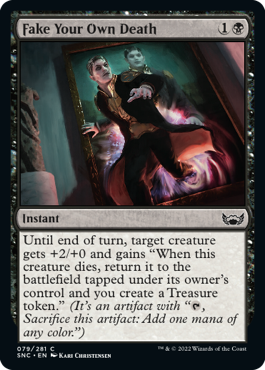
This flies in the face of White’s morality and the idea that there are some things that shouldn’t be done because they are immoral and that the ends do not always justify the means while Black believes the ends basically always justify the means. To White, if you want something done there are certain ways you can and can’t do it but Black has no scruples. White argues you should try to fight with honor and Black doesn’t care about honor. Black is willing to prey on the weak and defenseless that White wants to protect and sees as being just as valuable and important as the strong or cunning. White tends to be defensive and only strikes out or becomes proactive when it sees something as a moral or physical threat but Black will just remove whatever it feels is standing in its way even if it isn’t actively harming it. White will usually only kill in self defense and Black is more willing to kill just to take someone’s money. Black is definitely a more aggressive and proactive philosophy
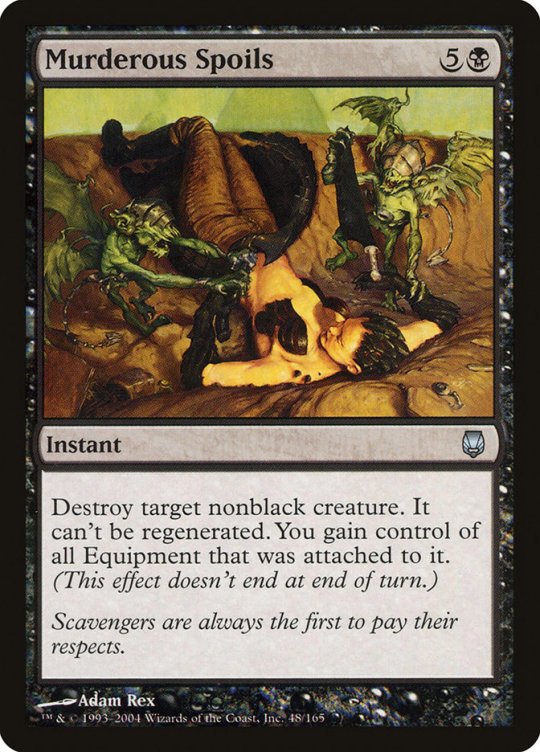


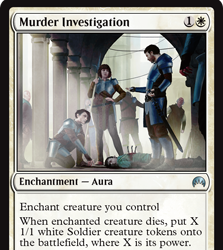
This ruthlessness is probably why Black is more likely to come off as “evil” to some. Black is just less concerned than White about doing the right and just thing. The only kind of “good” Black advocates for is doing what’s good for yourself at all times. To White most of the world’s suffering comes from selfish ways of thinking like Black philosophy screwing things up for everyone or screwing things up for an overall short term and selfish benefit. White strives to try to protect as many people as possible while Black doesn’t really care about the average person by default.
Of course, if ally colors can disagree on things then that means enemy colors probably agree philosophically on some things. First off, both colors understand the need for sacrifice and more long-term planning. Plus, both colors understand the potential power of laws and structure and the importance of self-improvement.
Both color philosophies have some major themes of sacrifice. In the case of White it is usually self-sacrifice while in the case of Black it is often the sacrificing of others but both colors understand that sometimes you need to make sacrifices for a bigger picture or plan, the long game is more important than the short game. Also White would argue that if forced to choose between the needs of a few and the needs of the many you should choose the needs of the many so it does understand the grim necessity for sacrifice sometimes, but Black sees the people and things it uses as pawns more often than White does. Black is definitely a philosophy that at the very least would try not to let the sacrifices of others go to waste, even if that means Black might just be using it for its own selfish desires sometimes, and it probably wouldn’t just throw the sacrifices away.


There is also the fact that both philosophies tend to be very need focused and they clearly separate wants and needs. To them not everything you want is necessarily what you need. White and Black are both advocating to give up stuff they may want to do now if it means getting something they may want more or need later.

Heck, one thing Black conflicts with Red on is that Red tends to focus too much on being shortsighted and emotional as well as the fact that Red doesn’t have much of a distinction between most needs and wants. An opinion that White can definitely agree on, meaning both White and Black tend prioritize longer term goals than colors like Red. They definitely are going to argue against ruining long term plans and goals just because you were angry and wanted to punch that old man or start a fight you couldn’t win. Black may be immoral but it is not without focus, goals and plans, and it is willing to use its head(which makes sense for a color allied with Blue).
Black is often thought of as a lone wolf rebel type of ideology but it’s important to remember that Black is willing to win by almost ANY means necessary. Black is totally willing to use laws, religion, and teamwork if it gives it some sort of tangible benefit, allows it to gain and retain power, or achieve other such goals.


There’s a difference between saying you need to look out for yourself and you need to do everything alone. This means both White and Black understand that working together and using laws can help foster behavior you want or need. Likewise, Black may be willing to help others or a group even if, unlike White, it is probably unwilling to do so without some sort of clear and tangible benefit. This also means that Black is at least capable of being loyal as long as you keep giving it what it wants, even if it might betray you the second you stop giving what it wants or if it sees a better opportunity.
White can also understand Black’s emphasis on self-improvement. White’s idea of what is self-improvement would probably differ and when the philosophies would agree on the matter White would probably say you should use such improvements to help others first and foremost(“With great power comes great responsibility”) but it can still understand that self-improvement can make someone a better person or more useful to the group and others. Remember, White wants to make the world a better place and it also wants to guide people to become better people and it itself strives to do good.
Enemy Color: Red
I feel like there are two main reasons White philosophy tends to deride Red philosophy so much. First off, there’s a Freedom vs Security angle between Red and White, as Red philosophy is one that puts freedom and emotion above White’s moral and civil laws as well as the good of the group. Then there’s also the fact that Red philosophy encourages a shortsighted living in the moment type of belief system that heavily conflicts with White’s ideals of the greater good, good of the group, and long term goals.
While the conflict between Red and White is ultimately one of Freedom(Red) vs Security(White) White philosophy would usually see the conflict as a battle of Chaos(Red) vs Order(White). The conflict is ultimately one that asks if we should follow our hearts and embrace freedom, even if that freedom potentially leads to us hurting ourselves/others, or if we should play it safe and try to minimize suffering even if we give up some of our freedoms and desires to do so? Also, how much personal freedom is worth societal protection? It is important to remember that Red believes in “Freedom through Action,” which means Red believes you should follow your heart and do what your emotions and instincts tell you to do if you want to live a fulfilled life. Red believes that you should be able to love what you want to love, do what you enjoy, or cry if you feel like crying but this also extends to potentially harmful things too. Red says that if you feel like yelling or punching someone then you should do so, if you want that food you should take it even if other people may need or want it. Using the bread example mentioned in a couple of the previous sections of this article, if there are twenty pieces of bread and twenty people White says we should probably make sure each person gets one piece of bread but Red is likely to try to eat until it’s full or getting the tastiest pieces of bread even if that means eating more than one piece. Now Red isn’t as ruthless as Black philosophy but it’s living in the emotional moment lifestyle is a force of chaos to White that conflicts with its long term and group oriented goals. If Black murders someone it’s probably for some selfish desire or goal(ie first degree murder) but if Red murders someone it’s probably because it didn’t reign in its emotions and acted in a moment of passion(manslaughter). Red philosophy encourages shortsightedness, carelessness, and flying by the seat of your pants.

Red believes you should be able to just do what you want even if it conflicts with or encroaches on the freedom of others. White is not necessarily against freedom but it usually draws the line at being able to hurt others, perform immoral actions, or cause unnecessary conflicts and it sees Red as just arguing for chaos. So White will usually try to put regulations, laws or limits on people to protect others and the group which in turn conflicts with Red wanting to live in a world or society that puts individual desires and freedoms first, even if this means encroaching on the freedom of others or creating conflicts. Basically, Red wants a world where it, and other people, can do whatever their heart desires with as few limitations as possible. To White, there are things more important than freedom and desires and needs of the group and the greater good should come before those things. White is totally likely to advocate for giving up things like freedom and that you might want if it benefits the group or prevents you from unnecessarily hurting others. Also, Red is all about following its own emotions. Since Red is following its own emotions it is also way more individualistic than White(see the previous bread example). Red can be loyal but it usually only cares about people or things it has an explicit emotional connection with. If Red is forced to choose between letting one person they really care about die or letting 500 people die it will usually choose the one person while White will usually advocate for the other choice since it is trying to help as many people as possible. While Red is less individualistic than Black philosophy it is still one that emphasizes putting one’s own emotions, instincts, and feelings first even if that may mean hurting others or comes at the expense of the community. Red is still very focused on the self even when concerning people it loves or willing to put before itself. To White, Black philosophy comes off parasitic and sadistic while Red philosophy is irresponsible, careless, and shortsighted. Although, White will often see both modes of thinking as equally dangerous even if they are dangerous in their own ways.

Both Black and Red disrupt White’s long term plans in a way. Black is willing to destroy White’s plans to prop itself up and Red is willing to destroy and hurt others in an act of passion.
Due to Red valuing freedom above all else it also means that Red philosophy heavily clashes against the laws, limitations and rules White philosophy usually wants to make. Red doesn’t care for most laws and may argue against what White sees as necessary rules since it thinks people should have the freedom to do whatever they want with little to no restraint. In essence, Red believes in a largely unrestricted freedom while White does not believe freedom should come at the cost of others, the group, or create needless conflicts.
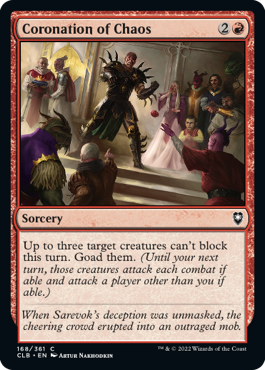
One of White’s major themes is restraint, which Red philosophy directly conflicts with because of its emphasis on wants, impulses, and emotion due to it arguing you should always try to act on your emotions. Red is something that is more likely to advocate for doing things like starting fights and it is more likely to get people hurt or cause situations it could have avoided. In essence, White wants to create restrictions to help protect people while Red wants to remove most of those restrictions.
Red and White do have some key agreements though. First, is that White is not heartless and thus understands how emotions can be important or used to win people over. There is also the fact that Red is still a philosophy that would say willing to put others first even if it doesn’t offer you a tangible benefit can be a good thing.
Starting with the first point, it is important to remember that White genuinely cares about people in general. It wants to make sure that the net happiness or satisfaction of the group is as high as it can be. Red is not just about rage but it is also a philosophy of things like love and care and White does usually want to display emotion because it generally does care about the people it is trying to help. While White doesn’t like how Red will just follow its emotions without regard to what it should or shouldn’t be doing, White does value passion in its organizations and it does genuinely want to show its comrades and the people it is trying to help and/or protect that it honestly does care about their well-being along with the fact that White isn’t just a dispassionate robot. White and Red can also be extremely loyal characters a lot of the time. Red’s loyalty is emotion based but it is capable of being extremely loyal to its friends, family and/or groups it is a part of. White is also extremely loyal to the causes it believes to be righteous and is willing to sacrifice things in order to help others. While White definitely has emotions, it is more willing to sacrifice itself for people outside of its emotional circle. Think of a hero sacrificing themselves to save a bunch of innocent people, like a city or something, even if their friends and family are not involved. White is actively trying to improve the world and help people so it can understand the importance of taking action and taking more proactive approaches to get desired results, such as removing something that threatens you or society or striking down evil. So while White is definitely more defensive of a philosophy than Red it can go on the offensive or see how going on the offensive can be useful. White isn’t going to want to just sit around and let people get hurt if it feels it is unjust and can help it.
A common White and Red theme you see explored in Magic is that of military or armies. Which is something that actually highlights another philosophical agreement between the colors. Unlike Black, Red is not saying you should always put yourself first and while it usually won’t just help people it doesn’t emotionally connect to for no reason Red can still encourage an extreme passion or loyalty to a person, group or cause in the same way White might have for religion, morality, groups or causes. Red and White also both advocate for being willing to fight for others you care about even if it might put you in danger. This means that despite being enemy colors Red and White both understand and tend to like to use tactics that involve masses of people. In Red this tends to manifest as a giant rioting emotional mob while White usually prefers more disciplined groups that have the people making them up strategically work together.
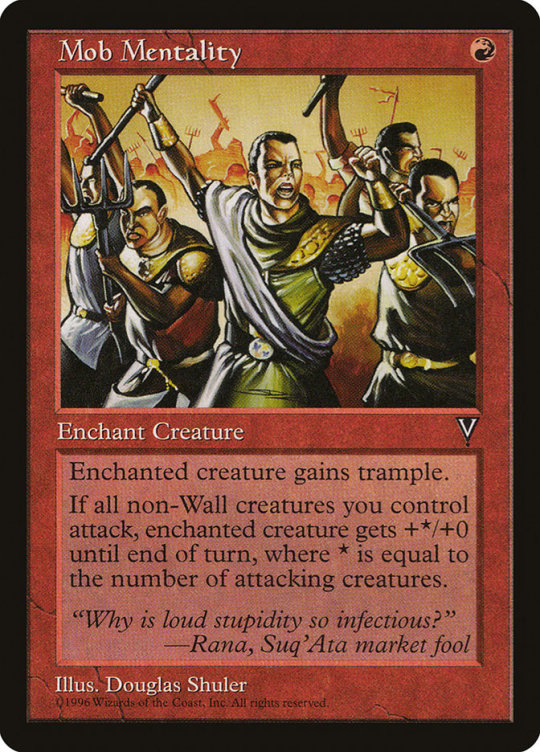


White and Red are also philosophies that can encourage or uphold loyalty a lot of the time. Red’s loyalty is more likely to be on a whim due to being emotion based but it can encourage being extremely loyal to its friends, family and/or groups.
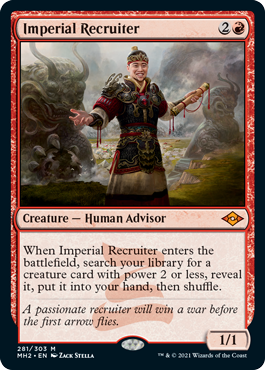
This emotional connection and loyalty also means that Red is reasonably likely to be willing to sacrifice itself for the people it cares about, unlike Black who would say you should always take care of yourself first. Of course, as mentioned before this loyalty and sacrifice is emotion based so it definitely tends less consistent or all-encompassing than White tends to be because as mentioned before Red is just going to protect those it has an emotional reason to care about and is way less likely to die for those it doesn’t know or care about. When you combine all these philosophical agreements you can end up with someone who is passionate about a moral cause or belief and is willing to actively fight for it. I’m going to cut myself off here and the army themes of Red and White will be covered in depth in the inevitable Red-White or Boros Legion philosophy articles.
Placement on the Color Pie
One thing I haven’t seen talked about is why colors are where they are on the color pie. In fairness, a lot of this is implied when you are talking allied and enemy colors in general but I figured it would be cool to briefly go over their placement on the color pie anyway. This should be pretty short since a lot of this stuff has already been covered in this article.
White being next to Blue highlights how both philosophies do want to actively change the world. Now unlike Blue, White does not believe literally everything can be changed with enough time and knowledge but both colors actively seek to make the world a better place and improve upon it when possible.
The fact that Green is next to White highlights the fact that White philosophy is one that unlike Blue does not believe everything is malleable and White believes some things are set in stone and can’t be changed, as it believes that there are inherent and objective moral laws. So it would make sense that White ends up falling between a color that’s all about changing things and a color that doesn’t want to change anything. In essence White is down to change but it usually does so slower than Blue, Black, or Red due to a combination of caution and wanting to make sure it is making the morally correct choice as well as the fact that it believes some things can’t or shouldn’t be changed.
One thing that Blue, Green, and White have is the understanding that there are things bigger than oneself or that these things come before oneself. In the case of Green this takes the form of nature and the ecosystem and for Blue this takes the form of progress and improvement. All the colors care about the bigger picture and would probably advocate for giving something up if they felt it helped the group or the world as a whole. Unlike, Black and Red which would probably do what helps you or what you want to. Blue and Green also both have an emphasis on boundaries, rules, and laws to help keep things orderly or in check like White does, in the case of Green this takes the form of natural laws. The colors tend to overlap even further with White and Blue tending to rely on man-made laws and White and Green tending to have a love for the use of tradition.
Black and Red are of course basically the complete opposite of Black and Red philosophies. Out of all the colors they tend to be the most individualistic and self-concerned philosophies and Black would argue you should always put yourself first while Red would argue you should always put your emotions first. At the end of the day Black, Red, and Black-Red are all colors and color combinations that focus on the self instead of others and are the most willing to disrupt White’s laws or groups for gain(Black) or because they didn’t want to control their emotions(Red). Black’s selfishness and explicit amorality is usually the biggest enemy to White’s moral laws while Red’s recklessness is usually the biggest enemy to White’s civil laws.

Elemental and Metaphorical Associations
This is a topic I figured would be very interesting to cover because I don’t see a lot of people talk about it. Well, that’s not true. I see a lot of people talk about the elements and some of the symbols associated with each color but I rarely see people discuss WHY that is the case even though it has been stated by Marro himself. In the case of White this section will be a bit short since it doesn’t have as many elemental or metaphorical associations as the other colors tend to, and I would say it's also about the same for Black because of the fact that White and Black don’t use the classical four “western” elements like Blue, Red and Green tend to. I should also mention that I’m talking about all these symbols from a generic “western” perspective unless I say otherwise because that’s the perspective Magic the Gathering tends to use. The exact same iconography may have a totally different symbolic meaning in different cultures or heck potentially different symbolic meanings in the same culture when under different contexts.

Light is easily the most recurring symbol in White magic cards. It shows up not only in a metric buttload of White card art and imagery but a seemingly countless number of White card names. White uses so much light imagery that I wouldn’t blame someone for thinking they were about to go blind just from the mere thought of how many White cards use it.
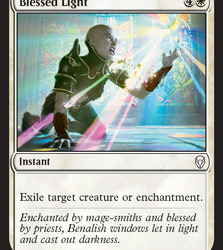
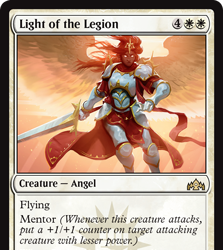
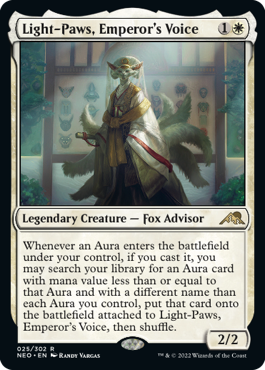

There are a couple of interesting reasons why White cards tend to have so much light. First of all, light is often associated with truth or guidance. Light is associated with truth because obviously if you are in a well-lit area you can usually see what’s happening and thus it is harder for things to be unnoticed or hidden from people in well-lit areas. If something is operating in the shadows or darkness it usually becomes much harder to see what they are doing and, of course, this means that people who probably don’t want to be seen doing something might operate in such places.

There is also the fact that things like flashlights or torches can be used to better see and reveal things hiding in the dark, things that could metaphorically represent secrets. This all falls in line with White valuing truth and morals while usually saying that things like lying are a bad thing. White usually wants people to be honest because lies allow people to act like they are working towards the good of the group or doing the morally right thing even if in actuality they are not. Which can of course endanger the group or other people.


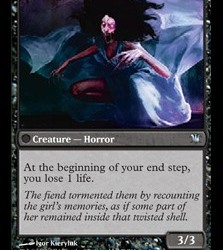
Light is also associated with the idea of “good.” This can be seen especially in a lot of Christian and Catholic imagery concerning the holy or divine. Spring boarding off this, White would obviously use holy and divine imagery in general because something that is holy or divine are usually(but not always) considered good, such as angels, as opposed to something that is seen as unholy or demonic.


This association with goodness ties in with White believing in an objective good vs evil and how White tends to play up those ideas in conflicts. It is important to remember that good vs evil is how White views some conflicts and is not necessarily how the other colors would view it. For example, Black doesn’t believe in any sort of good or evil. Light is also associated with guidance, think the stars in the night sky or something lighting the way, which I would say ties into how White wants to help or guide people to doing the right thing and just take care of people in general.
While not an element or anything physical, White is also heavily associated with purity. This ties into how White tends to see its ideals in absolutes and is less likely to have morally gray areas. Someone or something being “pure” would usually imply some sort of objective morality since being whatever is deemed morally or spiritually “pure” is being seen as a good thing. If someone is “impure” then they have either done something wrong or have some sort of sin on them.

Another thing White tends to be associated with is life. This is most obvious in the healing magic and life gain and those tend to represent how White is all about helping others and the group. White is trying to encourage all of us to look out for each other.

There is also the fact that White philosophy tends to care about the group and the masses so its connection to life also extends to the fact that it usually wants to save as many lives as possible and how White is all about the bigger picture and greater good. So it usually cares about lives on a mass scale.
There is also the matter of the very color of white itself. I would say that the specific reason for the color white being chosen to represent this philosophy is because it is a color that is often associated with purity which ties into White philosophy's strong focus on moral truth and the morally correct, since being pure would mean you are good. Because of how the color is associated with purity it is sometimes associated with good itself in some ways. It is also interesting to consider that the color Black, one of White’s enemies, is the opposite of White and tends to be associated with evil or corruption. Which highlights how White often sees Black’s way of thinking as evil or bad as well as just the conflict between the colors in general. White cards also tend to use a lot of gold and yellow and part of this is because there are a lot of places where using literal white might make things hard to see or look weird, plus it’s important to have some good secondary colors. The other part of this is that things like yellow and gold are similarly associated with sunlight and light in general.
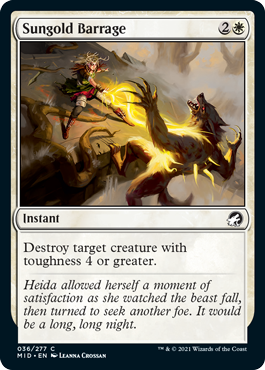
I also feel like White card art has a decent amount of shields and shield imagery where shields are explicitly the main focus. Which highlights its overall more defensive philosophy and how it strives to protect others and protect as many people as possible.


Mana Symbol
Let’s cover one of the most common symbols for White philosophy out there, it’s mana symbol. White’s mana symbol, like all of the other colors’ mana symbols, isn’t too hard to explain I mean it’s just a stylized sun.

I’m sorry but White’s original mana symbol is really hard for me to take seriously. It looks like a circle with squiggles around it or like me whenever I give up on trying to draw White’s mana symbol proportionally correct and patterned.

I’m not going to cover these symbols separately because ultimately the symbology is exactly the same(they are both stylized suns) and there isn’t really much to say about them anyway because I already covered most of the symbolism they allude to.
First off, the fact that the symbol is a sun immediately brings to mind White’s association with light, because light is associated with goodness, truth, guidance, and blah blah blah. If you want to go even farther there’s also some potential day and night symbolism since the day is when most humans are awake and are often associated with good and the night associated with evil or bad things, concepts like the witching hour occur at night. This theme is actually sort of played up in the Innistrad based Crimson Vow and Midnight Hunt sets as the story involves the night getting longer and longer, and by proxy causing monsters that prey on the mostly White aligned humans to become more active and powerful.
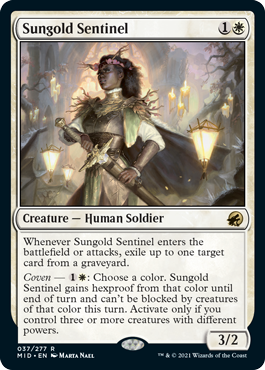
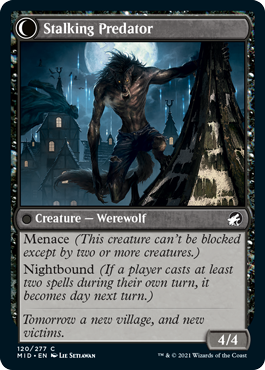
The reason the night can be associated with bad things is for the same reason darkness is associated with secrecy and evil. The sun is also associated with life, kindness, light, and warmth because of how said light and heat it provides is what allows virtually every living thing on earth to exist and thrive. White also tends to have a bit of a life theme because ultimately it wants to help as many people as possible and, similar to the sun, wants to provide feelings of safety and “warmth.” White is trying to help as many people as possible in the same way the sun helps all kinds of living things.
Land Type
Probably the second most iconic thing to each color, behind the mana symbols, is their land types and I would argue that every basic land actually has some interesting symbolism for each color. White’s associated basic land is the famous plain cards.
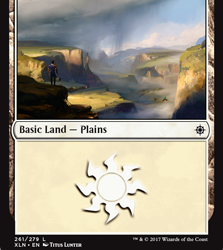
I think the choice of plains for White is interesting because I think it sort of ties in with White’s themes of truth and honesty. One thing that has been mentioned is that the now unused keyword Plainswalk, which was a keyword that made a creature unblockable if the opponent it was attacking controlled a plains, rarely showed up(like there are literally only 4 cards with plainswalk in existence) and we actually have been given a flavor reason for this. Plains are typically wide open and relatively flat areas so there isn’t usually a good place to hide or sneak up on someone in plains. I would argue this actually hints at part of what plains symbolize for White because as mentioned earlier White usually dislikes lying because lies can be used to hurt others or the group under the guise of seemingly doing the right thing or helping. So plains in this case basically play up that aspect. The wide open areas of plains also means that when they are bathed in light there will usually be very few shadows, unlike all the shadows and darkness that may appear in say a dingy swamp. This further ties in with White’s themes of light, truth and honesty. This connection is also something further reinforced by the fact that almost all MTG artwork featuring plains are usually depicting the plains at some point in the day, as opposed to the night. Something that also connects to White’s sun imagery.
Mark Rosewater also states in his “Drive to Work” episode 943 “Basic Lands” that when Richard Garfield was designing the lands he wanted the White land to be somewhere that was easiest to live and would usually be most appealing for a community to live and set up at. This sort of tells us that an aspect of White’s Plains is that they usually look welcoming and easy to live/settle on. This makes sense since building a house on a flat surface is probably easier than building it on like a Mountain or a muddy Swamp. It is also less likely to have dangerous land formations or have dangerous things like landslides occur. On top of that due to the aforementioned wide and open areas, it would at least be harder for predators or enemies to sneak up on you. All these aspects of Plains also tie in with White’s themes of peace and stability due to Plains since it is less likely for the environment to hurt you(unless there’s a tornado or something) and it is harder for other people or creatures to hurt you without your knowledge. Some of the precursor ideas to White’s basic land included things like Farmland, Countryside, Pasture, and Prairie. We know that lands like Farmland were dropped because Richard wanted lands that didn’t necessarily require things like cities, buildings, artifice, and civilization to exist. Having the lands be things that could be natural formations and/or have civilizations on them meant that they could be put in basically any plane or setting without sticking out like a sore thumb.


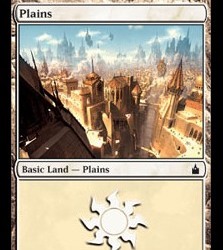

Also, Plains is notably the only basic land type that is pluralized and we are actually given a reason for this in the aforementioned podcast. The simplest answer is that it can potentially be really confusing because you have Plain like the type of land and words like plain are also commonly used to refer something simple, straightforward, unremarkable, etc. So by having Plains you are referring specifically to the plural version of the type of land as opposed to anything else. This also means creatures referring to the land type such as a “Plains Beast” wouldn’t sound like “Plain Beast” as in a simple beast. This is something that the other land types don’t really have to deal with since while I’m sure some smart aleck is already typing that technically an island can refer to “a detached portion of tissue or group of cells” such definitions aren’t as common for other land types. Whether the basic Red card says Mountain or Mountains ends up not really mattering since it is unlikely there will be much confusion, because when most people think Mountain they will assume you are talking about the landmass. Mark also assumes that Plains sounded better by ear to Richard Garfield.
General Gameplay Philosophy
I actually plan to do an entire separate article on White’s general gameplay and mechanics along with the flavor reasons for why White generally can or can’t do a certain thing but I will still touch on some of White’s mechanics and gameplay here. One thing that I don’t see talked about a lot that I discussed in some of my Kamigawa NEO articles is how the general gameplay style of each color hints at their philosophy and tends to reward you for playing in a way that matches the color’s ideals. There are obvious exceptions, for example you could make a Mono-Red control deck even if Red usually wants to win the game quickly, but those usually require more hoops to jump through and aren’t as common as a more general playstyle each color has. Just to be clear, this segment is meant to be brief and will cover the broadest of White’s mechanics and gameplay as opposed to literally every single keyword, deck, card and/or faction. Think of it like this, if you were to open a core Magic set what kind of White cards would you probably see?
White is famous for a few gameplay things in Magic. The most famous probably being its ability to make lots and lots of creature tokens as well as the fact that White’s creatures tend to be very small, including its tokens. White usually makes 1/1 tokens while a color like Green usually makes 3/3 tokens and Black typically makes 2/2 tokens and in general White prefers “weenie” strategies(strategies that focus on using small and usually efficient creatures). So what does this all mean? Well by now it should probably be clear that White is all about the group and people working together. When it comes to power and toughness in Magic I think people have a habit of taking it too literally sometimes when it is often meant to be symbolic. White having small creatures isn’t necessarily because it is physically weaker than other kinds of magic or colors but because ideologically it prefers to work as a team and views the group more important than the individual, but in fairness White is all about helping everyone(including the weak). So by having such small creatures the gameplay reinforces this theme, since it forces the player to think of most of their creatures as pieces of a larger whole that work together instead of just sending a massive 10/10 with trample to smash the opponent’s face in. An individual creature blocking that 5/5 probably is only a chump block but having your creatures work together so 5 1/1s are blocking it will probably take care of it. Your opponent may be able to block a 10/10 that doesn’t have trample or flying but they probably won’t be able to deal with 20 smaller creatures all attacking them at once. Trying to win with only a couple of big creatures in Mono-White tends to be an uphill battle because that’s not the way White would usually argue you should approach the situation. If you want to win you shouldn’t get hyperfixated on one or three big creatures but take into account the bigger picture and goal of the group in order to get people to work together towards said goal. This also means that if a creature dies or sacrifices themselves the overall objective is probably not in vain since the opponent will probably still have to contend with an army of other creatures. So if you want to win with White you need to acknowledge the fact that individual creatures aren’t usually going to matter as much as the entire group of creatures and if an individual creature does matter the most it is usually going to still be dependent on, or at least benefit from, you have a large group of other creatures to back them up.
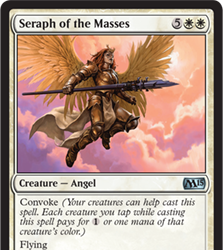
What White is basically saying here is that you shouldn’t stand alone and you should put the needs of the group of creatures you control over the needs of any one creature, and White itself would usually want to put the needs group first and thus wants to be more concerned about others and the group than itself. So it is less likely to go out of its way to do things like amass power unless that power is being used to help others. I should also mention that in comparison to some of the other colors the power-to-toughness ratio of many of White’s creatures tend to lean towards a higher toughness than power. Which mechanically reinforces White’s usually defensive philosophy and how it’s goal is often to protect, which in the game often takes the form of protecting you or other creatures you control.
In combination with its numerous small creatures White also has anthem style effects, for those who don’t know anthem effects are those that buff your entire time(ie giving all your creatures +1/+1 or +2/+2 effects).
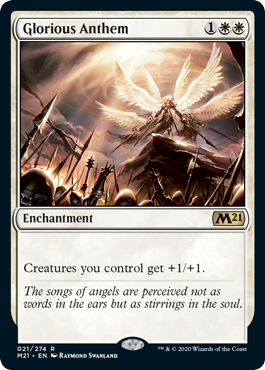

These anthem effects don’t reach their full potential unless you control as many creatures as possible. So having them show up frequently in White is a good way of signifying to the player that White usually wants to reward you for playing many creatures and that philosophically White wants to help groups of people and it tends to value groups over individuals.
White also tends to have a lot of combat tricks and growth style affects(giving a creature +n/+n). These power and toughness boosting effects tend to not be as big as Green’s version of those effects though. White’s boosting and combat tricks can be used to represent its defensive nature as doing something like suddenly granting a creature you control protection from a threat, boosting toughness, making it bigger, or giving it first strike can save it and help it survive something that would normally be fatal, and White is trying to save as many as it can.

The fact that it’s boosts tend to be smaller +1/+1 and +2/+2 style effects could relate to how White usually wants to work as a team, so by making these effects smaller you as a player are being encouraged to try to have the rest of your team work with the boosted creature and trying to just make said creature massive is usually going to be an uphill battle. Which can represent how White typically values the group over the individual. These boosts and combat tricks, such as first strike or protection from a color, can also allow White to be more aggressive which reflects White’s more proactive nature and how it does encourage actively fighting evil or righting wrongs instead of just sitting around all the time. These effects also keep your creatures safe as they attack.

This also ties into White’s themes of justice and stuff. White does also tend to have a sort of “eye for an eye” or “you mess with me I mess with you” flavoring a lot of the time.
White also sometimes gets the Keldon Warlord style ability of having a creature with its power and toughness being equal to the number of creatures you control, typically represented by a */* for their power and toughness. This once again displays that White is in its element in groups working together.

White’s number of enchantments and subsequent enchantment matters or enchantment-related mechanics is also a pretty notable aspect of its gameplay. As I’ve mentioned in my Kamigawa: Neon Dynasty articles it’s important to remember that card types in Magic can represent all sorts of things and we shouldn’t pigeonhole them too much since they may represent multiple things in equal amounts or there is probably any number of exceptions to my broad sweeping generalizations. Not to mention card types may represent different things in different contexts. In the case of White, its enchantment themes come from several different things. First off, enchantments in White are often used to represent, the often nonphysical, laws or rules being enforced via magic or other means.


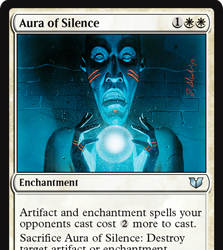
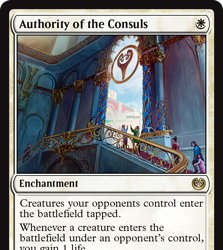

In essence they can represent putting some sort of restriction or rule by creating structures and laws and they can help either White or others stay in line and keep their morality correct. Enchantments are also used to represent confiscating or locking away items or creatures. This basically represents jail and a lot of the time it may also represent how White’s moral code usually prevents it from doing things like just killing people willy-nilly.

Plus, White’s trying to save as many people as possible so from its perspective exiling the creature with your Banishing Light is to make sure that creature doesn’t hurt itself or others, and possibly getting that creature to behave one day so it join the group as a beneficial member.

Another thing that White’s enchantments often represent is the part of its philosophy that wishes to make things better. Enchantments in Magic can often represent some sort of unnatural or natural change and in White’s case it can often represent trying to change things for the better or change something’s nature into something better.

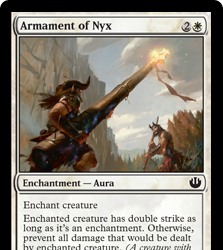


It should be noted that usually White’s enchantment answers can usually be undone or that they tend to have some sort of answer, i.e. its enchantment answers are either temporary or potentially have some answer the opponent can use to get around them. This usually represents one of two things. First off, if the opponent is playing by White’s rules and doing whatever it deems the right thing then it’s usually going to get punished less harshly(if at all) or White may have a hard time fighting against it because it sees little to no issue or doesn’t really have enough of a moral high ground. White is all about morality so if someone is doing something the right way or is morally just then there is probably going to be less White is willing to do about it. The second point is that White usually doesn’t like to permanently ruin things. Remember, White’s end goal is to try to help and save as many people as possible so it is usually trying to take the route with the least amount of destruction and suffering. Plus, White idealizes having a strong moral compass so it may prohibit itself from doing things like killing outside of self-defense, think Superman and how he refuses to kill. In a way, this can be thought of as an extension of how White philosophy can easily be inflexible or see the world in black and white, to the point where someone who is White aligned may refuse to do something a certain way because it is morally wrong. White is also really good at destroying enchantments which I guess could be perceived as White abolishing or changing laws.
White is also the undisputed #1 color when it comes to board wipes, also known as board sweeps(which are effects that destroy or exile all permanents of a certain type, ie. destroy all creatures).
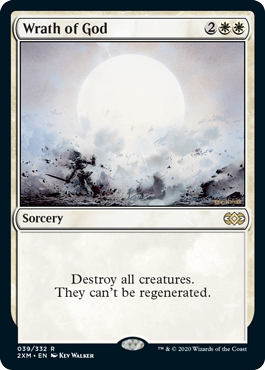
These board wipes represent two main things about White philosophy. First of all, that White cares about fairness and justice. So it chooses to destroy all creatures on the board and not just like it's opponent’s or something in order to literally even the playing field. It also represents White’s focus on the big picture. White usually wants to think on big scales so when it’s board wiping it's not just targeting one creature but engaging the opponent’s threats as a group(and thus taking care of them as one) and if you are board wiping you should be playing for the long game, i.e. it gives a better chance of winning down the line. You are potentially giving up your creatures and stuff now to be in a more advantageous position in the future unless you have no creatures but now you and your opponent have been put on an even playing field. You could also say this ties in with White’s themes of sacrifice since if your board wiping your creatures are being sacrificed to hopefully help you secure a win or not lose the game. The needs of the many outweigh the needs of the few and all that.
Life gain is something I touched on earlier in this very article but I’m going to touch on it again here because it would be weird to leave it out of this section. Plus, if someone just skipped to this section specifically they might miss it. White is the color that tends to be most associated with healing and healing magic so its life gain usually represents how White philosophy says you should help and look out for others.

The life gain also ties into White’s more defensive and long term goals by helping people or the group withstand something they normally couldn’t or to save as many people as possible. White also sometimes gets a little bit of graveyard recursion(putting things from the graveyard onto the battlefield or in your hand) but this is usually restricted to smaller things and tends to represent White saving someone from dying or the like in some way.

Furthermore, White also does somewhat of a sacrifice theme, although unlike Black the theme is that of self-sacrifice instead of the sacrificing of others. This ties into how White values the greater good and group over the individual and would argue that the needs of the many outweigh the needs of the few. So there are a decent number of White aligned creatures that are willing to sacrifice themselves to protect others or for the sake of doing the right thing.

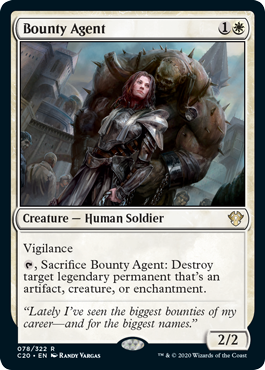


Overall White’s general gameplay can be best described as a form of go wide control style gameplay that seeks to whittle the opponent’s options down until the opponent is either cut off from any win condition or you can overwhelm them with sheer numbers. The encouragement to play a restrictive and controlling playstyle reflects White’s emphasis on moral laws, civil laws and structures to keep people in check as well as how White philosophy can encourage one to be controlling in general in order to make sure they are doing the right thing and to keep evil/opponents in check. White’s slower gameplay also ties into how it prefers long term and bigger picture planning over short term in the moment actions and its usually more defensive philosophy and how said defensive way of thinking is used to outlast or slow down opponents. White focusing on having a bunch of small creatures encourages the player to focus on having all their small creatures come together to execute something that a puny 1/1 could never dream of achieving on its own and how White often wants to protect and help everyone, including the weak, but as mentioned before power and toughness in magic shouldn’t always be taken so literally and having small creatures shows how White aligned creatures will usually value working together as a group over striking out on their own. On top of that White usually values the group over the individual so it is usually trying to raise the group as a whole up rather than just an individual. So in White you are likely to be punished for just trying to play a couple of really big powerful creatures over a large team working together. White’s slower playstyle also means it is potentially vulnerable to being outsped by a more aggressive playstyle which in some ways reflects how White philosophy can be inflexible or slow to change and adapt because of some sort of moral or law related angle. White’s answers also tend to either require your opponent to have met a certain condition such as attacking or blocking,...

which flavorly represents your opponent doing something wrong or breaking some rule, Either that or said answers will in turn have very clear answers. Which shows how White wants you to play by the rules and if you do then you will either be rewarded or avoid any sort of punishment. White can also do things like destroy creatures but have to give something that is theoretically of equal value to the opponent in return which represents White’s themes of fairness and balance.

Evergreen keywords
Now I know I just touched on general mechanics but I thought it would be helpful to look at some of White’s keywords and the kind of flavor they represent. Like the title of this section suggests this will only be focusing on evergreen keywords as deciduous keywords and the like will be covered in the next article that dives deeper into White’s mechanics. Because of that, I’m going to try to keep these explanations brief here.
In case you don’t know what an evergreen keyword is in Magic they are “keywords or keyword actions that can be used in any set.” Basically they are a list of keywords that can, and often are, present in basically every Magic set regardless of things like the flavor of a plane since they are usually designed in such a way that they can fit on just about any world. As of the writing of this article in 2022 the official list of evergreen keyword actions consists of activate, attach, cast, counter, create, destroy, discard, exchange, exile, fight, mill, play, reveal, sacrifice, scry, search, shuffle, tap/untap, and goad while the official pool of evergreen keyword abilities consist of deathtouch, defender, double strike, enchant, equip, first strike, flying, haste, hexproof, indestructible, lifelink, menace, protection, reach, trample, vigilance and ward. Now I know this sounds overwhelming and like a lot but we can actually ignore most of these in this article for two main reasons. First of all, some of these keywords are so broad or vague that there isn’t really much flavor to discuss and they end up appearing in every single color pretty evenly. Things like play, cast and reveal are things that all colors have because they are just like general gameplay mechanics inherent to Magic itself so all colors get them. Second, this article concerns White so I am also skipping over any keywords that White doesn’t get, ie deathtouch, menace, etc. I am also skipping over things that White gets but not often enough to justify not just saving the topic for the sequel to this article.
Also, I’m going to be mentioning the terms primary, secondary, and tertiary a lot and I will explain with that means in this context for those who don’t know or didn’t read my previous articles. If one or more colors are primary in an ability that means said ability shows up in that color the most and the color has the ability to grant the ability to other permanents. If said ability is one that appears in every set then a color that’s primary in said ability will get in in a majority of sets, like how Blue virtually always has cards with Flying in every magic set you come across.

In Mark’s 2017 and 2021 mechanical Color Pie articles he makes it clear that there is a wide range of what being primary in something can mean because of the fact that in Magic different effects and abilities appear in different amounts at different levels. A great example that he gives is how a color that’s secondary in Flying can have a greater number of cards with that ability than the number of cards with extra-turn creating abilities in a color that is primary in said ability.

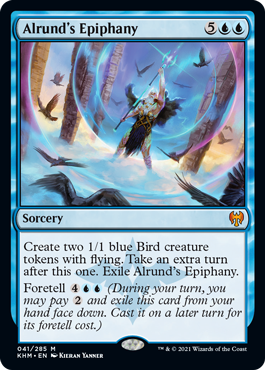
This is because there is just a massive difference in the number cards made with an ability like Flying and the number of extra-turn-based spells and abilities that are made. Extra-turn spells in general also tend to be at higher rarities than Flying, which helps bring me to my next point. If a color is primary in an ability then that ability is more likely to show up at lower rarities in that color, i.e. it's more likely to appear in common or uncommon rather than strictly mythic or rare cards. Colors that are primary in an ability can also have cards that are capable of granting said abilities to others, i.e. Blue being able to give creatures Flying.

If a color is secondary in something that means the color has the ability show up on its cards on a somewhat regular basis, but not as often as any of its primary abilities. Secondary abilities will not always be in as low of a rarity pool as any abilities a color is primary in. Also, abilities that are secondary in a color usually appear in said color within most sets but sometimes they do have certain restrictions or drawbacks regarding when or how they can be used. An example that is given to us would be how Red is secondary in Flying but its Flying is usually restricted to the Dragon and Phoenix creature types specifically.

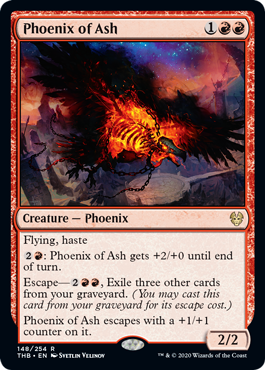
Similar to primary abilities, colors that are secondary in an ability do have the ability to occasionally grant other targets said ability.

Finally, there are tertiary abilities. Colors that are tertiary in something get said ability occasionally and they don’t get them in every set. Maro points out that sometimes an ability a color is tertiary can go literal years at a time without showing up on any cards of that color. Similar to that of some secondary abilities, tertiary abilities often come with special rules or restrictions that limit when the keyword can be used.

An example would be how Black is tertiary in First Strike and while it can get First Strike on other things the keyword tends to be more limited to Black-aligned Knights.
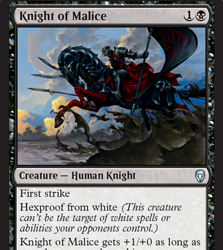
So with that out of the way we can get started. Also, I’m using Mark Rosewater’s 2021 Mechanical Color Pie article as my main reference if you’re curious, https://magic.wizards.com/en/articles/archive/making-magic/mechanical-color-pie-2021-10-18.
Counterspells and Meddling- Now I know this is a really weird start since counterspells might as well be Blue’s mascot. On top of that, technically the keyword I’m talking about is “counter” as in “counter target spell/ability” and not counterspell but I didn’t want to confuse people by making them think I was talking about +1/+1 counters or something, and throughout the rest of this series I am going to refer to this mechanic as counterspells. Moreover, White is actually tertiary in counterspells so Blue doesn’t have a complete monopoly on counterspells like some would have you believe. Being tertiary does mean that White’s access to the mechanic tends to be a lot more limited though and is thus restricted to having taxing and delaying style counterspells. Y’know spells that force someone to pay extra mana for the spell to resolve or stall for time by sending a spell back to the opponent’s library or hand and the like.

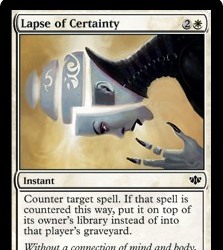
White can also get defensive counterspells that protect it or creatures it controls.

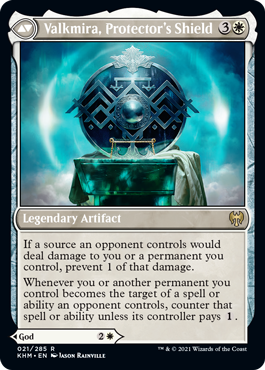
White is the premier color when it comes to taxing effects that force the opponent to pay mana in order to do something but flavorwise the taxing style counterspells represent White’s rules and laws basically radiate “Sure you can cast this spell as long as you meet these conditions, work hard and pay your taxes” sort of vibe. You can cast all the spells and abilities you want as long as you do it in a way White considers right or else the law, rules or White itself will have to come down on you for being immoral or doing something wrong.
The delaying style of counterspells is sort of just a reflection of how White is usually a slow color and philosophy that tends to play for the long game and big picture. It is one that prioritizes strategic planning and long term goals so delaying a spell like that gives it more time to get everyone together and come up with a plan.
Defensive counterspells are just a reflection of how White usually wants to save as many people as possible and thus advocates for protecting people. The reason White gets counterspells that specifically protect it and its creatures from being targeted by a harmful spell or ability is the same reason White can grant things like protection from a specific color or source. In fact spells that grant things like protection from a color or hexproof are often mechanically compared to counterspells by Mark Rosewater a decent amount and it's easy to see why. There is a very thin line between protecting that 1/1 creature you control from a Shock by granting it protection from Red and by countering the Shock. In fact, in a lot of situations, the distinction probably wouldn’t matter all that much except unless the opponent has a spell that can’t be countered or a board wipe.
White also has the ability to prevent spells with a certain quality or type from being cast in the form of “meddling” effects. These meddling mechanics are something that Mark describes as a proactive counterspell in his White/Blue drive to work so I’m including these types of effects here. They are a representation of White’s rules and laws. “You can no longer cast this spell because I have deemed it illegal or dangerous but you can cast all the other unbanned spells.” This essentially sets up new rules during a Magic game and it is still usually possible for the opponent to find an out via playing within the new parameters in the same way someone is allowed to go about their day if they don’t break any laws or rules White has set, and depending on the opponent White may also be restricting itself using these types of abilities.
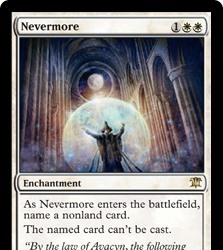
Scry- White is secondary in Scrying and the reason for this can most easily be seen in the fact that it’s enemy colors with Red. Now I know Red also gets scrying but if you read the previous parts of this series you would know that that’s mostly for gameplay reasons. Getting back on track, as covered in this article earlier, one of White philosophy’s major problems with Red is that Red strives to live in the moment which conflicts with White’s ideals of a greater good, the group, and long-term prosperity/planning for as many people as possible. What I’m saying is that Scrying in the context of colors like White and Blue is a representation of the colors’ emphasis on forethought and using your brain and mind over emotions and more rash decision making.

Tap and Untap- Now, technically I shouldn’t be covering tapping and untapping based on the previous criteria I laid out. I mean, literally almost every Magic card can tap itself to do something. However, I feel like in the case of colors like White and Blue it is worth noting because they have the ability to tap other things and untap themselves so I figured it was worth exploring since one of White’s primary abilities is being able to tap other creatures.

The flavor here represents both White stalling for time because of its preference for preparing for the long term and a way to safely or nonviolently prevent a creature from fighting or being able to hurt others. White is also secondary in being able to untap its own creatures is mechanically a neat combat trick that can be used to help protect yourself and just play defensively, which ties even further into the protection theme. This whole defensive theming in regards to untapping or not tapping at all is something that is further reinforced by Mark Rosewater’s comments on the Vigilance keyword(which we’ll get to later). Untapping can also represent White’s ideals of helping others by helping creatures you control recover quicker or get back up on their feet as well as give them an extra chance to defend you or themselves.

Defender- White is primary in Defender and I feel like that doesn’t need much explanation if you have managed to stick with me this far. Creatures with Defender can’t attack so by being more likely to have creatures with a mechanic that makes it so they can only block White is reinforcing its goals of wanting to protect and defend others.

First Strike and Double Strike- White is primary in First Strike which is interesting to consider. Because at first blush First Strike may seem completely offensive since the most obvious use of the keyword allows your creatures to deal damage before other creatures which acts as a pretty good incentive to give your opponent unfavorable blocks, in fact in Red the offensive nature of this keyword is usually the center highlight of the flavor.

However, it’s also a pretty good defensive tool since it allows your creatures to strike first when blocking in self defense. Which means that by leaving your First Strikes untapped on order to defend yourself makes the opponent’s attacks less favorable, not to mention that granting First Strike or Double Strike to one of your creatures can help keep it safe. So some of White’s signature love of protection and defense is still there. Although, Mark Rosewater also points out that most of the flavor here is one revolving around discipline. Specifically, the idea is that since White is all about long-term planning, order, armies, and discipline having First Strike and Double Strike reflects having well trained individuals or soldiers. Kind of like training every day to better support your team or going to church every Sunday. So then said creature in question has now trained so much they can attack quicker than others. It should also be noted that First Strike is used to represent creatures who are notably fast, extremely skilled, or have some sort of long-ranged weapon(like polearm or bow).

While Double Strike is a better First Strike, causing a creature with it to deal First Strike damage before striking again for a normal hit, I feel like the flavor for Double Strike overlaps enough in the fact that it is often used to represent exceptionally skilled or fast creatures and occasionally creatures with some sort of ranged weapon(like polearms or bows), so it doesn’t really justify its own category.

White is primary in it for basically the same reason it's primary in First Strike. Although, I guess unlike First Strike it is more likely to be used to represent the fact that someone is wielding multiple weapons of some sort(usually via dual wielding).

Flash- White is secondary in Flash, which is an ability that allows you to cast a card at any time you could cast an instant. In the case of White specifically Flash is usually flavored in a more defensive or heroic angle. Like someone rushing to save or protect you and/or creatures you control. This of course ties into White’s themes of striving to help others and take care of each other.
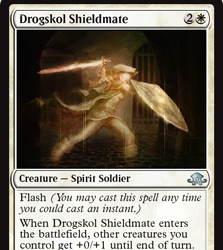

Flying- White, along with Blue, is primary in Flying and the ability is probably one of its claims to fame. Mechanically, this makes sense because having a bunch of small creatures but no way of ensuring any of them have a way to actually hit the opponent outside of purely overwhelming numbers sounds like it would suck and stifle the number of combat situations you could find yourself in. I feel like White having a large number of fliers is more of a mechanical necessity than flavor but do not think I am saying there is no possible flavor here or that it’s purely mechanical with no flavor taken into account. First off, White philosophy tends to have this play-it-safe angle to it. It is trying to keep as many people as it can safe. It also says using forethought and planning for the long term takes priority over the fleeting whims of emotions and short term goals, and it doesn’t like actions needlessly endangering other people or one’s self. So one could view Flying as a way of White playing it safe and making it more likely that its creatures can swing in and deal chip damage while remaining safe and unharmed, kind of like how granting a creature protection from a certain color means said creature can’t be blocked by a certain color and can thus attack safely(and White is actually primary in protection to represent its protective nature and emphasis on safety). I mean even though White usually doesn’t get stuff like unblockable abilities like Protection from *insert color/name here*, First Strike, and Double Strike all have an obvious emphasis on attacking and making your stuff impossible to block for certain creatures or discouraging your opponents from wanting to block them unless they have a combat trick or it's absolutely necessary. White keeping its units safe is not restricted to just blocking but also extends to attacking as it prefers to plan and on top of that make sure to save as many people as possible.


Hexproof, Indestructible, Protection, and Ward- White is tertiary in Hexproof, primary in Indestructible, primary in Protection, and primary in Ward. I’m lumping all these things together in the same category for White because while they are technically different things mechanically they basically all just emphasize White’s defensive and protective ideals and how it wants to save as many people as possible and keep them safe from a flavor perspective. Hexproof prevents spells and abilities an opponent controls from targeting your creature, Indestructible keeps things from being destroyed or killed from damage, Protection means something can’t be blocked, targeted, dealt damage, enchanted, or equipped by specific sources(most often colors), and White usually gets Ward effects that require an opponent to pay an extra mana cost to target a creature you control or else said spell or ability gets countered. Ward in particular also plays into White’s taxing counterspell theme of “sure you can cast this spell but only if you sign the required paperwork and cast it how I say you should cast it.”


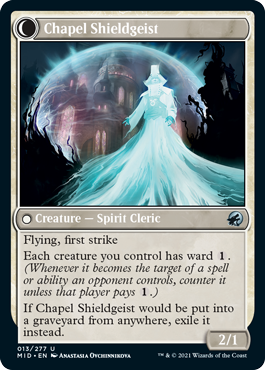
Lifelink- White is primary in Lifelink, and if you’ve read this far this probably doesn’t need much explanation. Lifelink is a keyword that means whenever said source with Lifelink deals damage that source’s controller gains that much life. In Black this ability flavors as parasitism or draining your opponents' vitality, resources, or health to make yourself stronger.
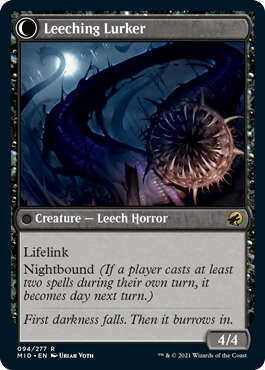
But in White it represents healing and aid. So when you do something like have your creatures swing in for damage it represents them taking actions to heal, repair or aid. Also, gaining life helps you survive longer which is in line with how White wants to prioritize preparing and surviving for the long term as well as trying to keep good things going for as long as possible. This also means that the keyword has a really defensive angle to it since it helps you tank more damage than normal. This also ties in with White’s general life themes, metaphors, and motifs because White is all about the greater good and the needs of the many over the few. So in essence it is trying to save as many lives as possible. This also means that White generally values life as it tries to save as many as possible and it tends to see each life as equal in value. Thus, its aligned mana and cards often seems to have life theming, along with Green of course.

Reach- White is tertiary in Reach and to be honest all things considered this is kind of weird one since White, along with Blue, is primary in Flying and Reach just allows a non-flying creature to be able to block other creatures with Flying but since White gets so much Flying anyway this seems like it would usually be mechanically redundant just like it would be in Blue most of the time. In fairness this isn’t like the worst thing ever since this isn’t a color pie break due to the fact that technically any color with a lot of fliers could mechanically also support Reach. This is just because Reach is really just a crappier version of Flying and if a color has a lot of creatures with Flying it can already block creatures with Flying anyway so no weaknesses of said color are being undermined. Anyway, Reach is usually flavored as a creature having some sort of long ranged or projectile weapon and as such in the case of colors who get it in a tertiary capacity they are usually on archers and the like. It is also used for spiders since spiders use their webs to catch unsuspecting flying creatures. However, at the time of this article there are no Mono-White spiders with Reach sooooooooo...

I think it would also be unfair to mention that from a flavor perspective Reach is an ability that revolves purely around blocking and allows you to block a wider variety of threats. So having Reach once again emphasizes how White strives to protect and defend and encourages the player to do the same when possible.

Trample- White is tertiary in Trample and this is another sort of weird one to think about. Not to say this makes literally no flavor sense or anything, it's just that colors like White and Blue usually have the smallest creatures power wise in Magic so it is definitely going to have the least amount of chances to have a card with Trample stapled on it. However, this is not to say that White never has any big creatures, and really from a flavor perspective, any creature that is big enough or hits with enough force could probably have a pretty solid argument made for having Trample, especially if it is at a high enough rarity. This aspect is even mentioned in Mark Rosewater’s 2021 Color Pie article and from a game design perspective, it makes sense. It helps prevent almost all big creatures from being made objectively inferior to small ones via endless chump blocks. I think there is also an argument to be made that colors with forms of evasion getting Trample as a way of sneaking in more damage since Flying creatures can’t be blocked unless you control a flier and Trample creatures deal excess damage unless you block with enough creatures or have a single big enough creature.
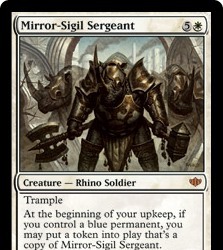
Vigilance- Last but not least is Vigilance, which White is primary in. Similar to life gain Mark Rosewater has gone through some great lengths to make some notable comments on its flavor. Similarly to keywords like First Strike and Double Strike, the offensive uses for this keyword are probably what will immediately jump out to players viewing this for the first time. However, while Vigilance is definitely a combat thing it is also a really really defensive thing due to the fact that it causes attacking creatures you control to not tap when attacking. This means that said creatures can be used to swing while also still being able to block later in order to protect yourself. This obviously ties in with White’s themes of protection and safety. In fact if one is paying attention this can easily be seen in how White creatures with Vigilance are often portrayed or represented in cards as protectors, guardians, people looking out for others, or looking for anything dangerous/amiss. It’s Magic trying to tell you that “Hey these creatures want to go out of their way to protect.”


The End
And with that, we have come to the end of this article. This article is actually part 1 as it will have a part 2 focusing just on White’s mechanics based on Mark Rosewater’s 2021 Color Pie article(and then maybe I might make something for White’s timeshifted color pie if I feel up to it). How do you feel about White philosophy? Did this video make you realize something about it you didn’t before or dispel any misconceptions? Do you agree with its stance or disagree? Also is it your favorite or least favorite color philosophical and/or mechanically and if so why? Either way, I hope you join me next time as I attempt to analyze and dissect a bunch of White’s mechanics and why it has them.

Sources
https://magic.wizards.com/en/articles/archive/making-magic/lets-talk-color-pie-2021-10-11
https://magic.wizards.com/en/articles/archive/making-magic/great-white-way-revisited-2015-07-13
https://mtg.fandom.com/wiki/White
https://magic.wizards.com/en/articles/archive/making-magic/peace-love-and-understanding-2008-10-06
https://magic.wizards.com/en/articles/archive/mm/we-will-survive-2014-09-29
https://magic.wizards.com/en/articles/archive/making-magic/smart-thinking-2014-11-03
http://dtwtranscripts.blogspot.com/2013/11/3222013-episode-26-white.html
https://magic.wizards.com/en/articles/archive/making-magic/slow-and-steady-2006-05-01-0
https://magic.wizards.com/en/articles/archive/making-magic/playing-their-own-rules-2006-03-27-0
https://magic.wizards.com/en/articles/archive/making-magic/evergreen-eggs-ham-2015-06-08
https://magic.wizards.com/en/articles/archive/making-magic/improving-upon-nature-2006-05-22
https://magic.wizards.com/en/articles/archive/making-magic/disorderly-conduct-2005-12-05-0
https://magic.wizards.com/en/articles/archive/feature/searching-within-2008-11-03
https://magic.wizards.com/en/articles/archive/making-magic/group-think-2005-10-03-0
https://magic.wizards.com/en/articles/archive/making-magic/finishing-first-2014-11-17
https://magic.wizards.com/en/articles/archive/making-magic/slow-and-steady-2006-05-01-0
https://magic.wizards.com/en/articles/archive/hate-enough-2002-02-19
https://magic.wizards.com/en/articles/archive/making-magic/colorful-replies-2018-07-16
https://magic.wizards.com/en/articles/archive/making-magic/return-colorful-replies-2019-07-29
http://dtwtranscripts.blogspot.com/2014/11/11714-episode-173-whiteblue.html
http://dtwtranscripts.blogspot.com/2015/04/41715-episode-219-greenwhite.html
https://media.wizards.com/2017/podcasts/magic/drivetowork402_colorpieconflicts.mp3
https://media.wizards.com/2017/podcasts/magic/drivetowork402_colorpieconflicts.mp3
https://media.wizards.com/2017/podcasts/magic/drivetowork403_colorpiealliances.mp3
https://media.wizards.com/2019/podcasts/magic/drivetowork679_changingthecolorpie_Hd83Uds1.mp3
https://loreleywrites.tumblr.com/post/92827570154/color-pie-friday-the-philosophy-of-white
https://cdn.transistor.fm/file/transistor/m/shows/21454/9fe1986cec69f9db16ae1da26d8e1f9f.mp3
#mtg#MagicTheGathering#ColorPie#WhitePhilosophy#MtgWhitePhilosophy#TheTasteOfMagicTheGathering#TheFlavorOfMagicTheGathering
12 notes
·
View notes
Text
Odinic Archetype
Some time ago, I picked up a book entitled “Return of Odin” at a local metaphysical store, as it would offer a history of the revival of the cult of Odin. Only later did I look up reviews on the world wide web and see mixed to outright negative reviews. What was I to think of the book before I even read it? I did think that I should still learn of the aforementioned history.
This book is centered on what psychologist Carl Jung called the Odinic archetype. I’ve seen criticisms of Carl Jung before—and his theories on the folk-soul for each race does seem rather suspect, particularly with white nationalism and its attendant authoritarianism returning to mainstream politics at this time. Nonetheless, the book as a whole was worth examining, so I’ll have to describe the Odinic archetype here. According to Jung, the family of northern European peoples have a collective unconscious archetype based on Odin, a god of ecstasy and frenzy. After being suppressed by Christian domination then Enlightenment rationalism, it reemerged, only to go horribly wrong with Nazism. Jung claimed Adolf Hitler was utterly possessed by the Odinic archetype. Jung warned that another, more widespread reemergence would also go horribly wrong unless the Odinic archetype was reconciled and properly integrated.
This book begins with a solid overview of Odin, the mythos and culture from which he emerged, the associated spiritual philosophy, the evidence for assorted pagan practices, and how Odin was driven to near-total obscurity, albeit with traces of said culture within Christendom. Next, the author discusses how ancient legends and ancient history—including peculiar interpretations, adaptations, and derivatives thereof—continued to influence occultists, eccentric thinkers, and countercultural youths through the modern period. Some people really did try to revive the magical and poetic aspects of the likes of Odin, such as with a countercultural community in Switzerland, but others did influence Nazism (in spite of most of the Nazi party’s leaders dismissing paganism or mysticism).
A handful of people who came afterwards took great pains to distance their interest in the Germanic heritage from Nazism, while others gladly associated said heritage—albeit in clearly distorted forms—with Neo-Nazism. A few self-proclaimed Wotanists even say that what Jung theorized regarding the Nazi regime was a good thing! One section in the book that has seen criticism goes over infamous crimes that at least one sociologist claims are manifestations of the negatives of the Odinic archetype—I agree that the connection is particularly strained, and even this book’s author admits there is hardly any evidence of Odin’s presence in any sense. One main criticism of this book is that its arguments for the presence of the Odinic archetype can be haphazard at times.
While talking about the continued rise of neopaganism and derived practices, the author argues that ignoring ethnic identities and ancient heritages among white people, even amidst serious efforts to correct systemic white supremacy, has left a void that fascists can work to fill within a darkened underground. He does touch upon neopagans who openly welcome anyone who wishes to join their path, along with the divide between them and folkists who assert that neopaganism is whites-only. He further mentions how the dominant capitalist culture can erode already embattled cultures and lands, most especially indigenous ones, and thus neopaganism can offer a meaningful resistance. His reasoning is that, going off Jung’s theories, ancient myth can offer serious wisdom and truth as vital aids for harmonizing minds and lives—and doing so in this manner is necessary to avoid new disasters from the negative aspects of the Odinic archetype.
The focus on Nazis and ethnocentric ultra-conservatives can certainly turn people off from the subject matter. That has indeed been another main criticism. Granted, this book does attempt a warts-and-all historical overview. Neopagans who look into such history should be brutally honest and admit that the pagan revival has gotten off to a very rough start. Explaining that rough start is a worthwhile endeavor. As I implied earlier, Jung did not intend for his theory to be fascistic or supremacist. As this book’s author points out, Jung believed that reviving pagan culture would help bring about renewed inner harmony among Europeans.
I’ve said it before and I’ll say it again—I do believe that reviving a culture of animism will be a crucial part of healing the modern world, along with our lives. Improved scholarship in recent years has shown that holistic animism was part and parcel of the old faiths. Reviving the old faiths perfectly intact is impossible and even undesirable in some aspects, but learning what we can of them and bringing the fundamentals to life is perfectly doable. If this book’s author intended to encourage solidarity with embattled indigenous cultures struggling to preserve their lands and spiritualities, he could have written much more about them, even if he does mention how outsiders have been drawn to them since the 1970s. He could have put the revival of ancient European heritages more firmly into the context of the birthright of humanity in general. His warnings on globalization and capitalism, as they are written, can easily be warped into segregationist propaganda or “globo-homo” conspiracy theories—which actually goes to show how insidious fascism can be, particularly eco-fascism. He does discuss how conspiracy theories spring from social fears both justified and bigoted—and discusses the power of myth for both good and ill.
I have talked about my own Germanic heritage (and Irish-Celtic heritage to a lesser extent). A Lakota-Nordic teacher whom I follow—she goes by the handle Boundless Warrior on Instagram—has written and spoken about the need for folks to reconcile with and integrate their heritages both recent and ancient. I do have to accept that, at one point or another, my own ancestors have integrated smoothly into or helped establish colonialist capitalist white society. She does speak of ancestral memory and ancestral gifts. I can certainly accept that even pre-colonial heritages have been and often still are grossly warped into very ugly things. What has been grossly warped, however, is in fact beautiful in nature. I may be an involuntary member of the colonizer class—for all my personal challenges, I could have easily been much worse off—I too am also part of a people among many peoples of Mother Earth. Indigenous spiritualists and activists have shown themselves to be avid promoters of the rich diversity among the many peoples of Mother Earth and the gifts that they bring. What gifts do I bear? What gifts can I receive from my most ancient ancestors?
I have difficulty with recommending “Return of Odin” on the ground of being a somewhat scattershot text that overemphasizes fascism and mythology gone wrong. I would have to read more about Carl Jung to make more solid assessments on him and his work, though so far, his theories seem very sketchy to me. Going back to what Boundless Warrior writes about, I can and should continue facing shadows both personal and ancestral. I can also discover gifts both personal and ancestral. That is what I ultimately wanted to get across in typing this journal entry. With such shadows healed and gifts integrated, I may yet make a great and positive impact on the world around me as a positive aspect of Jung’s Odinic archetype.
#paganism#heathenry#long text#odin#woden#archetype#history#mysticism#spirituality#norse paganism#pagan#paganblr#witchblr
4 notes
·
View notes
Text
The trap of autocracy – Le piège de l’autocratie par Google Traduction
The trap of autocracy – Le piège de l’autocratie par Google Traduction
Societas Criticus, revue de critique sociale et politique, Vol. 25-06, Éditos : www.societascriticus.com
Even the quotes have been translated. For the original in French, see https://www.tumblr.com/societascriticus2/738691860067958784/le-pi%C3%A8ge-de-lautocratie
Michel Handfield, M.Sc. sociology (2024-01-05)
And, once the worm of doubt enters the apple of democracy, it eats it from the inside.
If I don't find the United States perfect, far from it, I wouldn't throw myself at the feet of Russia or China. Three countries that want to rule the world their way; three autocracies.
When someone says to me "I don't like the United States, so I support Russia or China as a counterbalance", it doesn't work, because these three countries have the same autocratic philosophy: either you are with we or you are against us! There is not much room for open dialogue. Just look at the use of the right of veto in the United Nations Security Council (1) to understand it:
“Since the creation of the UN, the majority of vetoes in the Security Council have been exercised by the Soviet Union. Between 1946 and February 2022, out of 210 resolution proposals blocked by a veto, 117 were vetoed by the USSR then by Russia (including 13 jointly with China); 82 from the United States (including 22 with the United Kingdom and/or France); 29 from the United Kingdom (including 24 with the United States and/or France); 16 from France (including 15 with the United States and/or the United Kingdom); 16 from China (including 8 with Russia), including a use of the veto by the Republic of China (Taiwan) which occupied the seat of China until 1971." (2)
In addition, what does not help the United States is that it does not learn from its mistakes and always makes them again. They associate indiscriminately with the enemies of their enemies, as if they were reliable partners and friends.
They have also too often supported authoritarian or dictatorial regimes abroad, going against the will of the citizens of these countries. They have even helped overthrow democratically elected governments. For a country that calls itself a great democracy, the United States has not really helped democracy around the world. We can think of the overthrow of Allende in Chile (3) and the dictatorship of Pinochet which followed, or, less well known, the case of Iran on which I already heard a report on a program on history . Failing to find this report, Wikipedia comes to my rescue:
“In 1951, Prime Minister Mohammad Mossadegh nationalized the Anglo-Iranian Oil Company (AIOC). In August 1953, he was removed from power following a plot orchestrated by the British and American secret services, Operation Ajax. After his fall, Mohammad Reza Shah Pahlavi established an autocratic and dictatorial political regime based on American support. » (4)
Often, the United States would have been better off listening and engaging. This would have less often backfired on them. But ideological and economic reasons explain their choices, such as the fear of social progress assimilated to communism in their ideology. They prefer to rely on charity and consider human suffering as a virtue.
Their ideological weakness for often authoritarian regimes outside their country is therefore known to other powers such as Russia and China, to name a few. It is therefore not surprising that they are now attacking democratic regimes, because they know well that the United States has one achiles heel if not two: its own democracy, which is imperfect (5), and the shadow of Donald Trump who flirts with dictatorship (6) and a return to the White House.
Seeing democracy fall in the United States therefore becomes a possible dream for some dictators, including the presidents of China, Xi Jinping, and Russia, Vladimir Putin, because from that moment on they would not only talk about superiority of autocracy and dictatorship over democracy, but they would exult, a great democratic country having passed into their camp.
It is not for nothing that there are all these current threats in the world, because they put pressure on democracies and in particular the United States. In reaction, this could lead the United States to vote for a regime that calls itself muscular, Trump, and thus tip the United States into authoritarian, even dictatorial, regimes. China and Russia would have succeeded in their strategic coup.
From there, some European and South American countries, which already have right-wing regimes, would justify their autocratic system and could even fall into dictatorship. We must never forget that Europe experienced dictatorial regimes until the end of the 1970s, with Spain experiencing a large part of the 20th century under Francoism. (7)
It may seem good to say that we are against US imperialism, but if we support dictatorships instead, that is certainly not a win for freedom either. It's called a fool's market and many fall into this trap.
If we are lied to here like some people believe, tell yourself that it is the same elsewhere. So, where do we get the information? If we cannot trust the major media and journalists (8), who are supposed to have a code of ethics, what are we left with? Nothing.
What are the bases we can trust? If there are no more, we are in a very bad situation. In fact, we find ourselves faced with dominant individualism: everyone has their own news and their own thoughts without any points in common or convergence. There is no longer any society, only the market and advertising to reach us.
Some regimes may benefit from attacking these sources to bring democracies into chaos. This is perhaps the new world war that we did not see coming, because the real weapons are ideological and involve the control of information and disinformation. We don't want dead people on our hands, but servile consumers. (9)
That social networks block information networks and allow rumors and “fake news” to proliferate can only do their part in this program of destabilization of democracies. Unlike the hit film “The World After Us” (10), available on Netflix, the chaos does not come from the end of the Internet, but enters through the Internet and social networks in particular. And, once the worm of doubt enters the apple of democracy, it eats it from the inside.
Notes
1. https://fr.wikipedia.org/wiki/Droit_de_veto_au_Conseil_de_séurité_des_Nations_unies
2.https://fr.wikipedia.org/wiki/Droit_de_veto_au_Conseil_de_sécurité_des_Nations_unies#Les_utilisateurs
There you will find the notes of the text.
3. https://fr.wikipedia.org/wiki/Salvador_Allende
4. This passage is found in the “Constitutional Revolution and the Imperial State” section of the Wikipedia article on Iran:
5. According to a table from The Economist reproduced in :
STÉPHANIE GRAMMOND, À la santé (chancelante) de la démocratie !, LA PRESSE, 30 décembre 2023 :
6. Since the Assault on the US Capitol on January 6, 2021 (see the Le Devoir file on this subject: https://www.ledevoir.com/assaut-capitole) this possibility is a serious hypothesis. Guy Taillefer, among others, talks about it in an editorial in Le Devoir: Échec au danger de dictature aux États-Unis, Le Devoir, 20 décembre 2023 :
7. https://fr.wikipedia.org/wiki/Espagne_franquiste
8. It is different for commentators and editorialists, because they defend editorial, and therefore ideological, lines.
9. In this context, showing your muscles, speaking loudly, threatening, showing your weapons only serves to scare and divert your gaze from the real battlefield: that of the control of information and social networks, because this war is passing by the destabilization of regimes from within. We do not want ruins, but support for the new autocratic regimes of a future China-Russia-United States trilateral. We need the people to make consumption work.
10. https://fr.wikipedia.org/wiki/Le_Monde_après_nous
0 notes